
New Core Curriculum: SUCCESS
MADISON HELLER, STAFF WRITER
With the unveiling of the new academic curriculum for incoming first-year students, Stevens hopes to prepare students for exactly what the name says: success — the Stevens Undergraduate Core Curriculum Essential Skills for Success (SUCCESS). The aims of the program are to prepare students for the demands of college life (study skills, how to deal with mental health, time management, etc.) and to help them thrive in the constantly evolving workforce.
SUCCESS is an important part of the current 10-year strategic plan for improving the university’s position as a national leader in education. Part of that is improving the academic experience in a way that will promote future career success. As Vice Provost for Academic Innovation and Faculty Affairs David Zeng describes it, the new curriculum “will transform our undergraduate education and really enhance our students’ experience and success. They will have a better experience if they are better prepared. They will have more opportunities to succeed if they are better
SEE SUCCESS PAGE 2

Campus improvements coincide with Admitted Students Weekend
EVAN PAPAGEORGE, STAFF WRITER
Prospective students saw the beauty of Castle Point at Admitted Students Weekend on April 13 and 14, where they learned about the various academic and social endeavors possible while attending Stevens. As many current students noticed, campus saw a significant level of upkeep and major developments in long-standing projects, raising questions as to whether this past weekend was viewed as a deadline; here is a quick rundown of some campus projects in the past few weeks.
PSEG gift begets new Center for Sustainability
BEN KNOBLOCH, NEWS EDITOR
As part of a $1.45 million gift from the Public Service Enterprise Group (PSEG) Foundation, Stevens will be further investing in sustainability programs and research activity. The centerpiece of this initiative is the new Stevens Center for Sustainability, which has opened its primary office space in the Babbio Center. To learn more about the gift and the new Center, The Stute spoke with Director Dibyendu “Dibs” Sarkar and Program Manager Rosita Nunez.
Dr. Sarkar and Dr. Nunez noted the long history of collaboration between Stevens and PSEG, the parent company of PSE&G, which began over 20 years ago when the foundation made a gift to the university to open the Center for Innovation in Engineering and Science Education (CIESE). Although now defunct, that organization aimed to improve technical education at the K-12 levels and preceded other efforts from PSEG to advance responsible activity in its home state. “[PSEG] gave some funding to promote green energy research to some of the faculty members,” said Sarkar. “We decided to actually ask
them for a larger chunk of money to build this Center. The University Office of Development did this; [Director of Corporate and Foundation Relations] Jenna Nimar is really responsible for getting this initiative on the road. Jenna and I worked on this together to ask PSEG for quite a large amount of money, and came up with some ideas for the programs for the Center. So, they funded three programs for us to develop, all three of which are geared towards environmental justice initiatives.”
The first of these three initiatives, he said, is to conduct research into so-called “environmental justice communities,” which are areas that have been adversely affected by necessary but unpleasant infrastructure buildups, such as landfills and industrial sites. “They have a huge need for technological innovations there that can ultimately result in increasing their quality of life,” Sarkar explained. As a New Jersey-based energy corporation, PSEG has focused its environmental, social, and governance (ESG) efforts on environmental justice communities in Newark and other North Jersey cities. “As a company based
One well-known project that has been ongoing for a long time includes the new Palmer Plaza and the SS Stevens Anchor. Starting in the Fall 2023 semester, this project was planned to be completed in early February. However, the project was repeatedly delayed, with the team citing inclement weather preventing concrete and water feature work completion. Luckily, the project team finished the anchor and fountain within a week of the start of Admitted Students Weekend.
Another significant portion of campus that saw a considerable facelift in the past few weeks is the aes-
thetics of the buildings, including refreshes of paint, decals, and signage. For example, the University Center Complex (UCC), the lobbies of the South, Harries Residential Towers, and streets saw new coats of paint as the UCC and Schaefer Athletic and Recreation Center saw new decals on the doors. Additionally, buildings with ongoing projects, like Walker Gymnasium, saw the installation of signs explaining the ongoing work with renderings of the final product.
One last far-reaching project that is very visible
The state of on-campus housing has been in flux in recent years as Stevens has gone through a significant period of transformation. In the span of a few years, students experienced the demolition of Jacobus and Hayden Halls and the rise of new residential towers as part of the University Center Complex (UCC). As the University gears up for another stretch of growth and development and expounds on future plans, many students have wondered what other areas of campus will see upheaval.
The Stute had the opportunity to speak with Vice President for Student Affairs Sara Klein and Vice President for Facilities and Campus Operations Bob Maffia about the future of on-campus housing and how it will be affected by the big changes in store.
The Stute: In the past, how has the University approached large-scale construction projects that impact student housing? For example, how did the school plan the demolition of Hayden and Jacobus Halls in preparation for the construction of the UCC, and how was the temporary housing reduction solved?
Projects that affect student housing are planned well in advance, usually two years or more. As you
know, housing selections and assignments must be done with full knowledge of the buildings and rooms available. To prepare for the demolition of Jacobus and Hayden Halls, we first needed to create a temporary Student Center, which was located in the former Alexander House (now named Martha Bayard Stevens Hall). That meant having to plan, design, and renovate that building, which started in early 2018. Once that was done, we relocated the Student Center services, allowing us to start the demolition of Jacobus Hall in January 2019. Before we could demolish Hayden Hall, we had to wait until the students moved out at the end of the Spring semester of that same year. Leases were put in place in several buildings in Hoboken to replace the temporary loss of beds, and the shuttle service was expanded to transport students to and from campus.
S: The Year 1 Report for the 2032 Strategic Plan says that “Programming and schematic design has begun for a multipurpose building to replace Davis Hall,” and outlines the space breakdown of that building. Can you tell us more about that?
Stevens is currently evaluating a number of fac-
RDS testing meal swipe donation with Feed the Flock
KAYDEN CANNILLA, OPINION EDITOR
The Office of Residential & Dining Services (RDS) is offering a new program called Feed the Flock that allows students to receive meal swipes from a community pool of donated meal swipes. This program aims to address the issue of food insecurity among Stevens students and allows those with excess meal swipes to provide them to those in need. The Stute spoke to Trina Ballantyne, Dean of RDS, for more information.
A community meal plan program has been in the works for some time, and with the help of Stevens Dining Services, Stevens IT, the Office of Student Support, the Student Government Association (SGA), Residential Hall Association (RHA), and students from the Office of Student Culture and Belonging, the program is currently being piloted with hopes ironing out any issues for the start of the Fall 2024 semester. A form is currently live, and it allows students to donate up to 10% of their plan’s meal swipes to the
community swipe bank. Students with a Tera Bite meal plan, a group that includes most first years, can donate up to 23 meal swipes to their peers. Currently, snack swipes are not a part of this program.
Any student can request meals with minimal restrictions. Students can request one to three meal swipes, with a maximum of three requests per semester. The transfer of meal swipes is not immediate: “It may take up to two business days to be processed and see meals added to your Stevens Cam-
pus Dining Grub Hub Meal Plan account,” said Ballantyne. If students have a meal plan, they “must have no more than three Meal Swipes and/or $20 dining dollars in their account to request meals.” The form is intended to be discreet and indiscriminately provide meals to those who request it.
Stevens Dining Services has preemptively donated meals to kick off the community bank, so there are currently available meals for
HOBOKEN NEWS NATIONAL NEWS
Hidden gems of the Hoboken Public Library
SEAN ANDERSON, STAFF WRITER
The Hoboken Public Library (HPL) contains a trove of books, magazines, journals, and movies free for library cardholders to borrow at their pleasure. Availability extends far further than the limits of the building, too, as items can be borrowed as long as they exist in any branch of the Bergen County Cooperative Library System. But, in an effort to supply the community with more, the library has expanded what can be checked out with the new “Library of
Things.”
The Library of Things is a new offering by the HPL that allows cardholders to take advantage of renting items beyond those typically expected to be found in a library. Some item categories offered fall into other forms of entertainment, including video games, lawn games, electronic devices for music, and movies. Others include useful tools, including kitchen equipment and other general tools.
Looking to watch a rented movie from the library
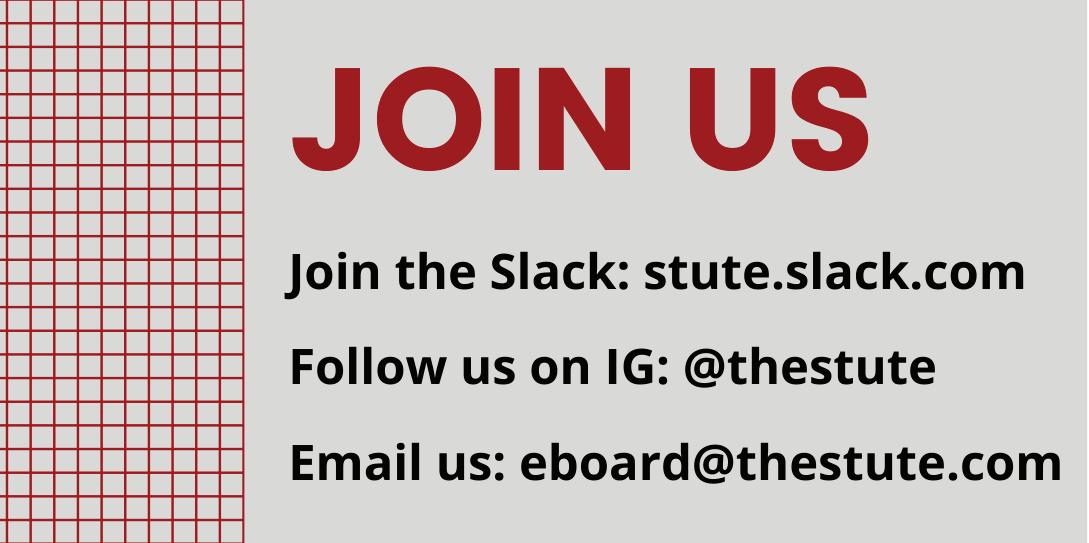
Biden Administration slashes student loan debt
JEREMIAH
CHINWENDU, STAFF WRITER
One of the biggest promises President Biden has been making both throughout his presidency, and long before it, has been the relief of student debt for those struggling to pay. Biden’s previous effort to cut student debt was rejected by the Supreme Court as an overreach in power, leading to the development of a new plan. With the new plan, the Biden administration hopes to enact by this fall, nearly 30 million borrowers will

see their debts either reduced or completely forgiven.
The proposal is still being finalized and has to gain the approval of the Supreme Court in order to be put into action. Those who will benefit from this plan wait patiently for news of its progress as we get ready to vote in this year’s presidential election. Information on the plan and whom it aims to help comes from Erica Green of the New York Times and the correspondents of National Broadcast-

HOBOKEN, NJ |April 19 2024 VOLUME CXXI No. 25 NEW STUTE EVERY FRIDAY • EST. 1904 The student newspaper of Stevens Institute of Technology, and creator of Attila the Duck. www.thestute.com TikTok @thestute Instagram @thestute facebook.com/stevensthestute
Day is Monday, April 22!
reading, please dispose of this paper thoughtfully and recycle NEWS (2-3) Campus improvements coincide with Admitted Students Weekend While many students expressed positive views on the work, some raised questions over why this only happens in preparation for Admitted Students Weekend. FEATURE (4) Happy Earth Day! Learn about the environment. SCIENCE (6) Who is Lucy? Sulfuryl fluoride emissions? The Great American Eclipse? Read about what’s going on in the world of science. PULSE (10) Read answers from the Stevens community to our weekly Roving Reporter, plus solve our weekly puzzle and sudoku.
write Stevens history
Earth
After
We
PHOTO COURTESY OF @STEVENSSTUDENTS ON INSTAGRAM (SHOT BY SARA KLEIN)
SEE IMPROVE PAGE 2 Sara Klein and Bob Maffia discuss student housing BEN KNOBLOCH, NEWS EDITOR SEE HOUSE PAGE 2
SEE PSEG PAGE 2 SEE LIBRARY PAGE 2 SEE DEBT PAGE 2 SEE MEALS PAGE 2
Jeremiah Chinwendu
Ethan Kleschinsky
Claire Hannan
Doug Sousa
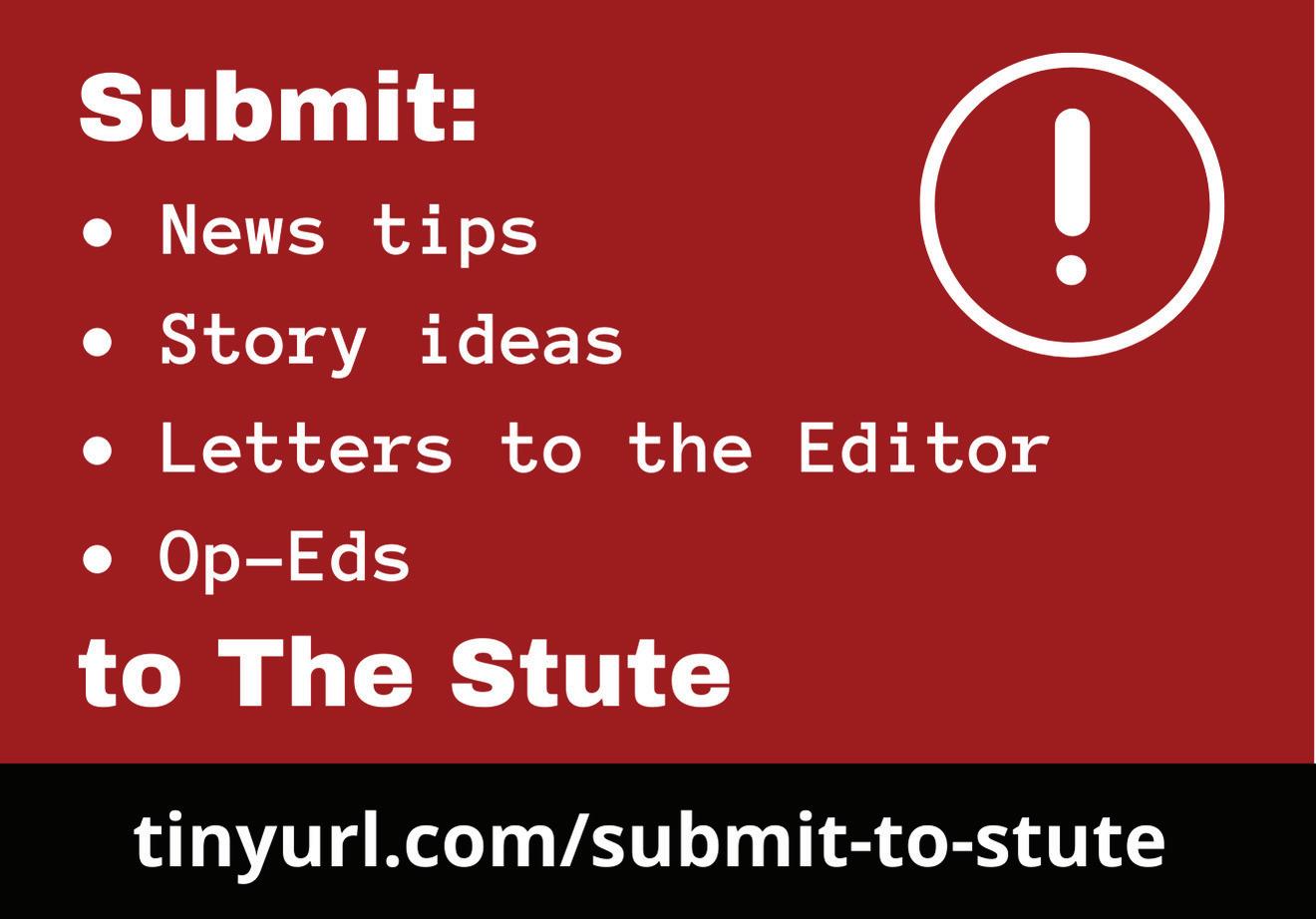
SUCCESS
CONTINUED FROM PAGE 1
educated and prepared. The modern digital economy is technology-driven. If students have all the skills for success, they are more likely to be successful in their future career.” This goal to improve student performance in both academics and the workforce is what defines the SUCCESS program.
This upcoming 2024-25 academic year, SUCCESS consists of a series of three required Frontiers of Technology courses and the First-Year Experience course. The Frontiers of Technology courses are designed to evolve with changing technology, and year-to-year, their topics shall be reevaluated to
IMPROVE
CONTINUED FROM PAGE 1
was a campus-wide landscaping upkeep. This has included the installation of sod in dead spots of the lawn, the first instances of mulch in recent months, and countless plants and flowers planted from Hoxie House to Edwin A.
ensure that Stevens students are always receiving the most up-todate information about emerging technologies in the workforce. For the upcoming Fall semester, students will choose three of the five available classes: AI and Machine Learning (PRV201), Data Science and Analytics (PRV202), Biotechnology (PRV203), Sustainability (PRV 204), and Quantum Technology (PRV205). TFirst-Year Experience (FYE) course, PRV 101, is directed by Chris Shemanski under the Division of Student Affairs and aims to introduce students to Stevens and its resources. The required courses for all incoming undergraduate students in all schools and majors will now include HASS103, HASS105, a computing course, an entrepreneurship course, the FYE course, and
appealing—some raised questions over why this only happens in preparation for Admitted Students Weekend. While some work, like landscaping and the fountain development, could not occur until now due to weather, some projects seem to have been put off for extended periods. Walker Gymnasium, for example, has been under renovation for months, but the sign explaining the work only first
an individual selection of at least three of the Frontiers of Technology courses.
As the university makes this transition, the plan will only affect incoming first-year students and transfer students starting in the Fall of 2024 and will have no impact on current students. There will not be any impact on the course requirements of the program of study for incoming students, as SUCCESS was created in a way that would leave as little impact as possible on academic requirements.
With the implementation of the new SUCCESS curriculum, Stevens is preparing its future undergraduates for success at Stevens while also setting them up for success in a rapidly evolving technology-centered world.
While recruiting students is vital for Stevens’s ongoing and future success, questions remain about the timing of these projects. These projects’ completion aligning with Admitted Students Weekend causes current students to speculate about who is meant to benefit from them. While the campus needs to look its best for prospective students, the changes appear superficial. Regardless, anyone on campus this week has had the opportunity to enjoy these
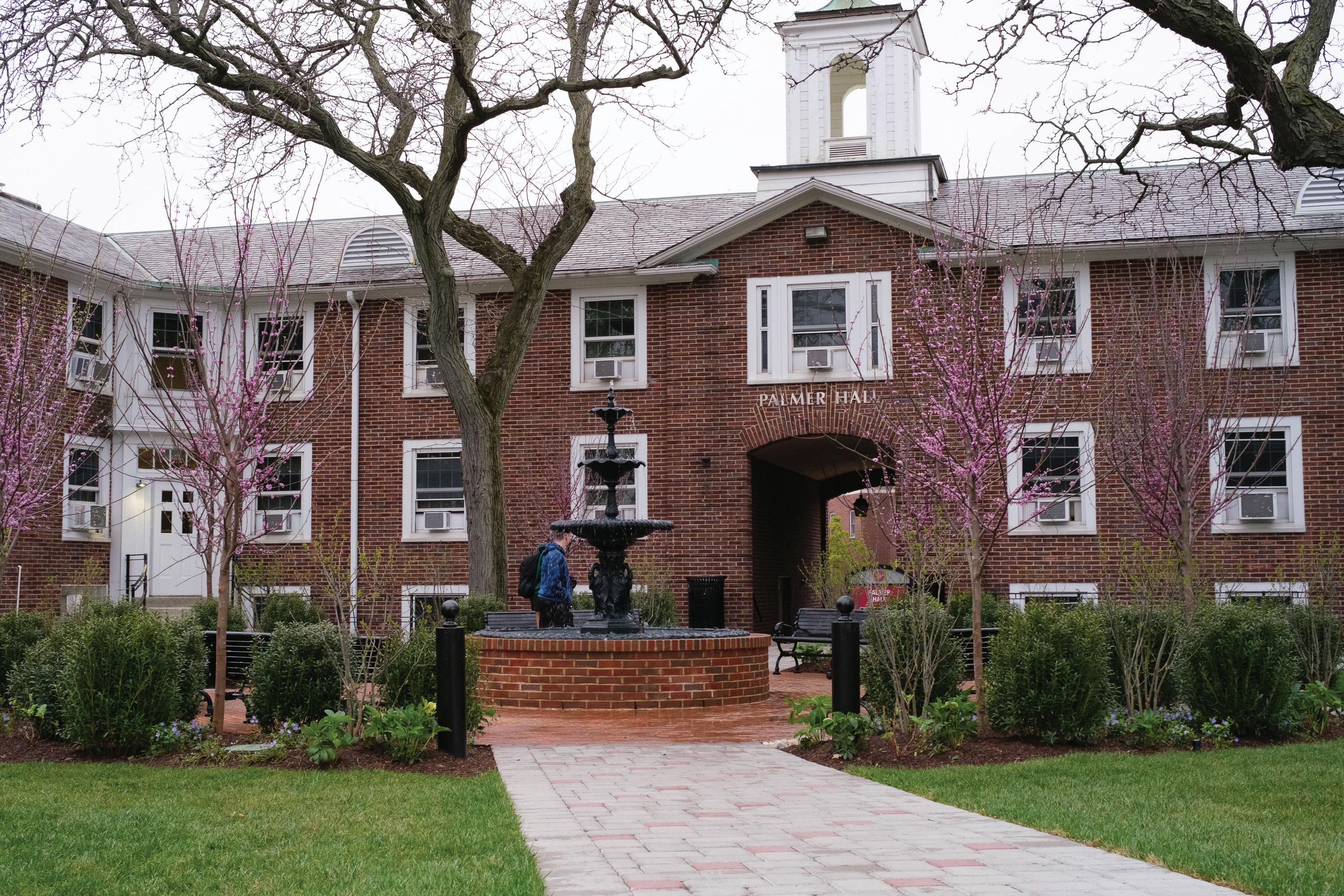
HOUSE
CONTINUED FROM PAGE 1
tors that will influence the decision to replace Davis Hall, including affordability, funding sources, timing, and the exact program for the building. While this analysis is underway, the design and construction team have been working in parallel to plan a multi-purpose building on the Davis site so that when a decision is made, we will be ready to go.
S: Are any details regarding this building, including the listed program spaces, confirmed for a potential replacement?
We are anticipating a mixture
PSEG
CONTINUED FROM PAGE 1
in New Jersey, PSEG has a great deal of responsibility in this area.”
The second initiative is an augmentation to the Accessing Careers in Engineering and Science (ACES) Pre-College Program that adds a new module centered around sustainability. Developed and headed by Dr. Nunez, the new module aligns with the goals of the Center more broadly by focusing on environmental justice, tying in with the previous initiative’s work on mitigating historical environmental disparities. “It’s going to be one module in the pre-college program,” said Dr. Nunez. “They have six groups of about 50 students who will be on campus learning about a variety of things, and this will be one of them.”
Additionally, as detailed on the Center’s site, scholarships will be offered to ACES Pre-College Program participants. The final of the three funded initiatives is a prestigious new summer research program for undergraduates. Focusing on highly driven students with a passion for sustainable engineering and innovative environmental research, sti-
idential spaces, but this work is still underway.
S: Assuming that Davis will one day be replaced due to its age, regardless of the timeframe, how would the University approach that project?
Unlike the UCC project, we will not have to relocate program space to another part of campus, as we did before we could remove Jacobus Hall. We will still have to account for the loss of beds, but we now have the towers which gives us on-campus options we did not have when we built the UCC. If needed, we could lease apartments in Hoboken during the period of construction.
S: The scope of on-campus
pends of $7,500 will be offered to each of the seven selected students. “It is an intense summer research program of 40 hours a week for 10 weeks,” explained Sarkar. “It is a very good opportunity to get more students involved in sustainability research. And it’s a good chunk of change for an undergraduate student. It will run for three years, for the summers of 2024 through 2026. Those spots are open now!” Interested students may apply via the posted online form. He encouraged applicants to be open about their interests and guided by their curiosities. “We want to hear what you want to work on. We’re not going to spoon feed you, tell you ‘This is my project, come and work on it.’” He noted that mentors would be matched with students based on their indicated interests and that selections would be based largely on project proposal diversity. “We want somebody to work on social injustice, others on energy sustainability, and others on environmental sustainability, like pollution cleanups, and others on business sustainability. Everything has to be geared towards the development of environmental justice. Then, Dr. Nunez and I will do the matchmaking [between student proposals and faculty mentors].”
housing relative to the size of the student body has been highly variable throughout Stevens’s history and recently increased dramatically with the opening of the UCC towers. What is Stevens’ position on the future of on-campus housing and its availability to upperclassmen?
Stevens would love to be able to offer enough housing to all students of any class year who wish to reside on-campus. We are, of course, limited by the physical space on campus and the number of beds available in our existing halls. If opportunities arise for additional student housing options in the future, we will certainly consider and pursue them as we are able.
When asked about the ultimate purpose of the new Center, Sarkar envisioned its location in Babbio 317A, the newly remodeled room on the third floor of that building, as a nexus of interdisciplinary interaction open to students, student organizations, and faculty. “We want this center to become a catalyst for this kind of research. Stevens is not a huge place. Almost everybody knows everybody. [...] What we want is people to think of this as the place where ideas are going to be born. This is a place where people who are doing AI can work with someone like me, who are doing experimental research on sustainability, who can work together and come up with a proposal idea. It’s going to be the birthing ground of these new, interdisciplinary ideas.”
Even if you’re new to sustainability, don’t have any concrete ideas, or just want to learn what’s going on, Sarkar said, he still wants you to come. “This is going to be a good lounge for students!
When you don’t have a class, come here, have a conversation with like-minded folks! [...] I know many students here are interested, and want to do something. But there has been no real playbook for them. And that is something we are trying to create.”
2 Friday, April 19 News Contact Us Corrections Disclaimer Policy on Letters to the Editor Policy on Op-Eds FULL LIST ON thestute.com/policies GENERAL.........................................EBOARD@THESTUTE.COM EDITOR-IN-CHIEF.........................EDITOR@THESTUTE.COM ADVERTISING.............................BUSINESS@THESTUTE.COM OFFICE.................................UNIVERSITY CENTER ROOM 216B NOTICE A MISTAKE? Email us at eboard@thestute.com. All opinions and editorials reflect the views of their respective author(s). No Part of The Stute may be reproduced in any form, in whole or in part, without the written consent of the Editor-in-Chief. Cited references of The Stute are permitted. All members of the Stevens community are able to submit a Letter to the Editor to be published in The Stute. Letters must refer either to a piece published in The Stute or to The Stute in general and must be between 400 – 800 words in length. Submit letters to editor@thestute.com with your name and title (when applicable) or using our Google form. For writers who wish to write a Letter to the Editor anonymously, please see our policy on anonymity. The Editorial Board reserves the right to choose whether or not to publish a submitted Letter to the Editor based on a majority rule vote, and additionally reserves the right to edit letters for clarity or request authors to revise. Provided that the author approves the final version, The Stute reserves the right to edit letters according to our copy editing procedures, defined in our policies. All members of the Stevens community are able to submit a standalone opinion piece (otherwise known as an Op-Ed) to be published in The Stute. Op-Eds must be between 400 – 800 words, but longer submissions will be considered on a case-by-case basis. To submit an OpEd please email eboard@thestute.com with your name and title (when applicable) or using our Google form (tinyurl.com/submit-t0-stute). For writers who wish to write an Op-Ed anonymously, please see our policy on anonymity. The Editorial Board reserves the right to choose whether or not to publish a submitted Op-Ed based on a majority rule vote, and additionally reserves the right to edit Op-Eds for clarity or request authors to revise. Provided that the author approves the final version, The Stute reserves the right to edit Op-Eds according to our copy editing procedures, defined in our policies. EDITOR-IN-CHIEF......................................ISABELLA ZIV ‘25 BUSINESS MANAGER............................TANYA AVADIA ‘26 MANAGING EDITOR..............................ARTHUR SERRA ‘27 LAYOUT EDITOR................................JIYA JAISINGHANI ‘27 OUTREACH CHAIR.........................................AVA WANG ‘25 DIGITAL MANAGER...................................ABBY JACOBS ‘27 SECRETARY..........................................NICOLE GIARDINO ‘25 HEAD COPY EDITOR.....................EVAN PAPAGEORGE ‘26 NEWS EDITOR.........................................BEN KNOBLOCH ‘25 SCIENCE EDITOR..................................RIYANA PHADKE ‘27 OPINION EDITOR.............................KAYDEN CANNILLA ‘24 SPORTS EDITOR................................RUTHIE MULLISKY ‘26 FEATURES EDITOR................................TASHA KHOSLA ‘25 PULSE EDITOR........................................MIA PETROLINO ‘25 HEAD PHOTOGRAPHER RAFAEL LEE LI ‘25 ARCHIVES LIAISON.......................KEVIN CASTNER JR. ‘24
Volume CXXI No. 25 Editorial Board Operations
Masthead
Board Staff & Contributors
Advait Dantuluri Liz Sepulveda Stephen Pachucki Jack Scherban Madison Heller
Sean Anderson
Nicole Cheung
Hima Thummala
‘27
EDITOR......................LIZ SEPULVEDA ‘27
Board
Rachel Abraham Executive Board ASSIS. LAYOUT EDITOR...........................SHREYA ROY
ASSIS. LAYOUT
Operations
tinyurl.com/stutesubmit
RAFAEL LEE LI FOR THE STUTE
CONTINUED FROM PAGE 1
ing Company (NBC) News.
The plan that President Biden is hoping to move into action is meant to relieve the burden of student loans on those struggling to pay. As reported by Green, “The plan would reduce payments for 25 million borrowers and erase all debt for more than four million Americans. Altogether, 10 million borrowers would see debt relief of $5,000 or more, officials said.” According to NBC, the demographics expected to benefit the most from this plan include “those in public service who’ve been paying off their loans for 10 years or more; borrowers of undergraduate or graduate loans who started paying off loans at least 20 or 25 years ago, respectively; borrowers enrolled in low financial value programs; and those experiencing hardships that prevent them from making loan payments.” Also included are borrowers whose balances were affected by high interest, borrowers who have not applied for other loan forgiveness programs, and
CONTINUED FROM PAGE 1
borrowers who, “enrolled in programs or colleges that lost federal funding because they cheated or defrauded students,” writes Green. Biden’s previous plan, proposed last year, tried to “grant $400 billion in debt relief for [43] million borrowers by using the Higher Education Relief Opportunities for Students Act of 2003, or HEROES Act,” according to Green. This act allows the secretary of education to modify existing student financial assistance programs to benefit people in special cases, like those serving in the military during times of war and those who fell into hardships as a direct result of war, military operations, or national emergencies. The administration argued to the Supreme Court that the COVID-19 pandemic was a national emergency that affected millions of citizens, and thus, this plan fell under the guidelines of the act. However, the Supreme Court ruled against this act, stating that it overstepped the authority of the president. Whereas the previous plan aimed for broad loan forgiveness, this new plan narrows down to specific demographics who will see the most benefit. The hope is that this change will allow the plan
to move forward.
NBC News reported on a public hearing by President Biden in Wisconsin, in which he declared that the mitigation of student loan debt is something he is passionate about accomplishing. He underscored the impact that this program will have on the economy, helping it to get stronger over time. “By freeing millions of Americans from this crushing debt [...] it means they can finally get on with their lives, instead of their lives being put on hold,” Biden said. This new plan more closely adheres to the Higher Education Act of 1965, which provides the guidelines for the HEROES Act and all other programs of debt relief created in the past. As reported by Green, the plan still needs to be published in the Federal Register, after which the public will have a chance to view and comment on it for a period of time before it is presented to the Supreme Court to face further judgment. Officials say they hope to have some policies enacted in early fall, and the administration remains hopeful, as this plan’s success or failure will be a major concern for those voting in the presidential election this November.
needs. “Once we have established the program and made sure all are informed and we are steadily receiving donations, we will explore other opportunities to assist our students and help those in need,” says Ballantyne. Stevens has also joined the Swipe Out Hunger campus network, which connects campuses with program support, grants, discounted products, and re sources for implementing anti-hunger policy. The Feed the Flock program is intended to support students who are food insecure, but because swipes are limited, it cannot replace a meal plan. “Additional help may be available to students who are in need through the Office of Student Support at stevenssupport@ stevens.edu,” says Ballantyne.
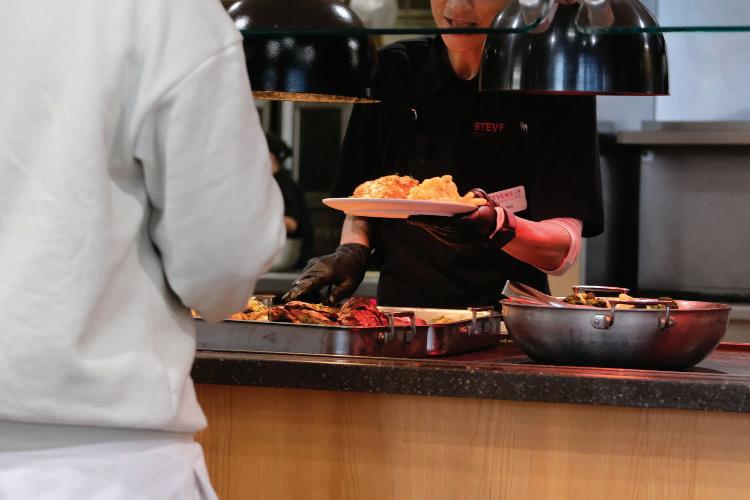
LIBRARY
CONTINUED FROM PAGE 1
but don’t have a DVD player? The Library of Things has you covered with a Sony Blu-Ray disc player. Trying to clean out the inside of your car but don’t have the equipment? The Library of Things can loan you a wet/dry/blow vacuum with all the necessary attachments.
The Hoboken Library continues to add to the Library of Things from suggestions through their email: requests@hobokenlibrary.org.
While the HPL has only recently adopted this feature and is still building up its collection, many other libraries have already established a Library of Things of their own. The Union Public Library, for example, has over 70 items in its collection, with some of the most interesting being an electric guitar, a portable butane stove, and an iron for clothing.
The HPL offers much more to its library patrons. Daily events are hosted in the building for children, teens, and adults. This past week, the library has been partnering with the Hoboken Community Center for a food drive to help families in need in Hoboken. Weekly events are also hosted at
the library, including an American Sign Language class, a Yoga and Mindfulness class, and more. This month is also National Poetry Month, and the HPL is celebrating by hosting poetry events, including an Open Mic night on April 30.
The library offers a Makerspace as well, in which staff host classes and collaborative projects. On Mondays, they offer Open Time for people to come in and ask for technology assistance from the staff. The room itself contains multiple 3D printers and other machines that can be used by cardholders.
If you are interested in acquiring a library card, the process is relatively easy. If you are a resident of Hoboken, then you only need to fill out a quick form, which can be found at the library or online through the library’s website. You will also need some form of ID as a Hoboken resident. Most reading this are not Hoboken residents but currently work or attend school in Hoboken. In this case, when filling out the form, you must also include a letter from an employer showing proof of employment in Hoboken or a letter from the Office of Student Life showing proof of enrollment and rooming assignment. A library card is completely free, and the savings on books and other items can really add up in the end.
petitions pushing back against this, doubling down by promising to never donate to Stevens. Having seen the state of Gateway North, it’s hard not to see this “reclamation” as nothing more than a half-hearted attempt to rainbow-wash a building shrouded in controversy. Even if Gateway North is reclaimed for a week or even a month, the question will always remain of what permanent good will come from these streamers and balloons for the queer community. Instead of raising awareness, it is a capitulation to an administration that refuses to meet our demands– a capitulation that the Stevens community will not accept. We acknowledge that public awareness of the boycott has been waning as each year the student body becomes more distant from the original call to action. We understand why some may see a desire to change, and even would be open to discussion of how to modify tactics to strengthen our efforts. While we don’t believe that SGA’s intentions were malicious, and in the case of the aforementioned petition it perhaps mischaracterizes them as actors of the administration, it is undoubtable that the SGA has mishandled this situation. Alongside them, The Stute has failed to properly represent the voices of our community. We demand bet-
ter than this. The SGA has pushed the rebranding of the boycott without the backing of the queer community. Their attempt represents topdown leadership, pushing without getting a consensus among the orgs enacting the boycott. Of the two major queer student orgs, Torch Alliance was consulted but they were not firmly behind moving forwards with any efforts, especially not without the support of other orgs. oSTEM, the other queer student organization on campus, was staunchly against such a change and was actively ignored in pushing forward this initiative.
Furthermore, the other 50 organizations that originally signed onto the original boycott were not consulted together, and the town halls on the topic were publicized minimally. For a measure meant to take initiative, the initiative should have been made to unify these other orgs before taking any action. The SGA’s efforts have been rushed and expedited for the purposes of having a headline for pride week, at the expense of getting the other players involved behind whatever initiative they may have pushed. Regardless of their intentions, the SGA has ignored and disenfranchised the groups that are responsible for keeping this boycott ongoing. The Stute, similarly, has repeatedly failed to reach out to the student orgs on multiple occasions this year. The article “What’s up with Gateway North”, which
came out in November, offhandedly mentions talk of ending the boycott, which was especially surprising to the organizations on campus which had not had any such discussion. In retrospect, it’s obvious that The Stute was likely in talks with the SGA, failing to consult with anyone else in the process. Likewise, the front page piece for last week’s paper features the reframing of the boycott, again failing to consult with any groups involved. Torch Alliance is even named as having pushed the original boycott, but they were not consulted before the article came out, a choice which erroneously portrayed them as behind the reclamation. We acknowledge the many deadlines and difficulties involved in producing a paper such as The Stute, but that is not an excuse for failing their journalistic responsibility. It is unacceptable for them to not reach out for relevant comments for these sorts of articles.
Although much of the coverage of Gianforte in recent years has honed in on his homophobia and transphobia, we believe it necessary to remind all students of everything he has done against the values of the Stevens Community as a whole. He has assaulted a reporter, going against the ideals of free press and speech. As a tech school, we naturally value logic and scientific reason, meanwhile Gianforte is a young earth creationist who has funded museums that teach the Earth to be six thou-


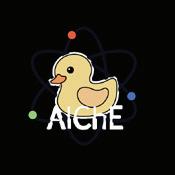

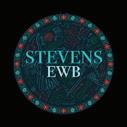
sand years old and evolution to be false. During the initial call to remove his name from the building, it was Gianforte himself who revoked half of his donation, leaving the school to pay for the difference and giving a metaphorical middle finger to our community. Most recently in his tenure as governor, he has passed laws limiting abortion, restricting healthcare for trans youth, and appointing known white supremacist conspiracy theorists to government positions. The boycott was never solely about homophobia, and the examples cited are by no means an exhaustive list of every value of Stevens that he stands against or every group he has harmed and continues to harm. Even if Gateway North were “reclaimed” by queer students, that does nothing to reclaim all of his name, and that’s without even questioning whether a reclamation is something that can be forced in the first place. It’s for this reason that we write to the SGA and The Stute. We will not be ending this boycott until the name is changed, and we must continue to raise awareness and fight such that this will not be forgotten. It may seem small and insignificant compared to all of the other things in the world, but if the administration can not make the obvious choice to strip his name from the building, then how can we expect them to stand by their students in much harder moral choices? So long as the building remains in his name, it is a

3 Friday, April 19
News
DEBT
OP-ED An
This week marked the rollout of SGA’s
Open Letter to the SGA and The Stute
attempted rebranding of the Gianforte boycott. Already, we’ve seen massive alumni
reminder of a culture unsafe for
other
the building until our demands are met, and we must continue to put pressure on the school. SGA does not speak for us and we demand to be heard. Signed, Torch Alliance E-Board Out in Science, Technology, Engineering, and Mathematics E-Board Stevens Trivia Club Stevens A Cappella Commuter Student Union Omega Phi Beta Sorority, Incorporated Society of Asian Scientists & Engineers Redshift E-Board Sigma Psi Zeta Sorority, Incorporated Japanese Student Association Nu Alpha Phi Fraternity Chinese Student Association Stevens Underground Music Awareness Committee Eboard Audio Engineering Club Order of Omega Ethnic Student Council Alpha Phi StevensTHON STEVENS FAME Korean Students Association College Democrats of Stevens The Link Alpha Phi Omega E-board Chi Phi WCPR Castle Point Radio
monitor the donation bank
see the volume of
meet
MEALS
women, POC, queer folks, and so many
people that make up the Stevens community. We will not end the boycott. We will not host events in
students to request. They
to
donations and requests and ensure they are able to
student
RAFAEL LEE LI FOR THE STUTE ART DAYH2024 E PRESENTS PLANTS SAVE 24TH 1-4 PM LAWN LAWN GAMES PAIN FOOD GIVEAWAYS THRIFTING LOTS OFFUN PALMER APRIL RECORD TING COHOSTS:

EARTH DAY!
Feature
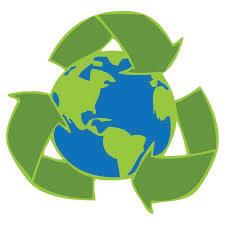
AI and its environmental impacts
BY TANYA AVADIA BUSINESS MANAGER
Artificial Intelligence (AI) has truly taken the world by storm, and yet, collectively, it is difficult to pinpoint the impact AI will have on the world. With Earth Day right around the corner, it’s fitting to dive deep into the environmental effects of AI. AI is a very powerful tool that is in the midst of being integrated at all levels of society, and there is no stopping this as AI possesses many benefits. However, when it comes to the environment, is AI helpful or harmful? The answer is both. AI is a multipurpose technology that can essentially be trained or modified to fit a plethora of uses. Because of this reason, it has the potential to be useful when it comes to monitoring, optimization, and prediction making, all functions that could help humans better the environment. On the flip side, creating and implementing AI is already starting to prove very taxing for the Earth’s resources. There are several ongoing initiatives that aid and protect the environment that wouldn’t be possible or as successful without the help of AI and a few of them are listed below.
Detecting planet-heating methane:
After carbon dioxide emissions, methane emissions are the second highest contributor to global warming. Methane is a highly potent greenhouse gas and is the main ingredient found in natural gas, which is a widely used form of energy. Methane enters
the atmosphere through a variety of sectors, such as the energy and agriculture industries. However, scientists and researchers have found a way to track methane emissions on a daily basis through AI-powered tools. “Before we could mine satellite information with AI, we had no idea where methane was coming from,” says Antoine Halff, co-founder and chief analyst at Kayrros, a climate analytics firm.
Preventing and detecting wildfires:
With the changing global climate, wildfires are becoming commonplace. CEO of Dryad, Carsten Brinkschulte, explains how his startup is working to use AI-based sensors to detect smaller burns before they escalate into large-scale wildfires. Similarly, AI is also being incorporated into preventative measures like having controlled burns that function as a way to remove the excess bush and vegetation that serves as a catalyst for wildfires. Yolanda Gil, director for strategic AI and data science initiatives at the University of Southern California, and her team built “Burn Managers,” a smart Siri-or Alexa-like assistant that analyzes high volumes of data and creates models to ultimately decide where and when controlled burns should be made.
While these are some extremely positive takes on the environmentally-friendly capabilities of AI, there are several downsides to the overall inception and operation of AI technologies and some of these are explored down below.
AI’s extensive carbon footprint:
One of AI’s biggest strengths is processing a lot of information very quickly, and this does come at a cost. Training AI with complex datasets and models requires a lot of energy, and this directly impacts greenhouse gas levels. A study conducted by University of Massachusetts researchers found that training AI models can produce about 626,000 pounds of carbon dioxide, which is equivalent to 300 roundtrips from New York City to San Francisco. The issue is this already isn’t a sustainable practice, but with the growth of AI and its reliance on society, the environmental offsets created by AI are only going to increase.
Electronic waste disposal:
AI requires specialized chips in order to process high amounts of data at fast rates. This, unfortunately, also leads to high rates of e-waste, which can have severe consequences on the environment. E-waste contains harmful materials that can easily contaminate soil and water supplies, which is endangering both humans and the environment overall.
While it is clear that AI eases many processes and certain things would not be possible without the use of AI technology, AI does still pose a serious environmental concern. As the use of AI is only going to grow within the world, a lot of work will have to be done by people to regulate the use of AI, especially to control the environmental offsets its increased use will bring about.
The brainwashing of Greenwashing
BY RIYANA PHADKE SCIENCE EDITOR
In the ever-continuing fight against climate change, there is a huge problem that is setting back the efforts of many earth-friendly organizations: greenwashing. The science is clear. Greenhouse emissions like carbon and methane due to human activities have caused mass pollution, leading to a warmer planet and severe impacts on the weather. The world continues to experience more intense storms, droughts, floods, and wildfires due to these greenhouse gasses. To limit climate change and maintain a livable planet, emissions must be cut in half by 2030 and reduced to net zero by 2050. “Every fraction of a degree of warming matters and,” as put by the former chair of the High-Level Expert Group on the Net-Zero Emissions Commitments of Non-State Entities. “The planet cannot afford delays, excuses, or more greenwashing.”
Greenwashing is a practice that deceptively portrays the environmental efforts of organizations, creating a facade of sustainability where in reality, there is little to no effort being made. In other words, it is when companies make unsubstantiated claims about their products, stating they are green when they are not. Greenwashing camouflages the true intention behind many campaigns for eco-friendly products, hindering genuine progress in the fight against climate change.
The most common examples of greenwashing seen by companies and manufacturers are being purposely vague about a company’s materials being used, applying intentionally misleading labels such as “green” or “eco-friendly,” and claiming to be on track to reduce polluting emissions to net zero when no plan is actually in place.
Many high status companies
have been caught greenwashing in the past couple of years.
Volkswagen obtained the most significant penalty for greenwashing to date. In 2015, the corporation was discovered to have manipulated two diesel engines to falsely depict lower emissions levels. Despite appearing compliant, these engines were emitting nitrogen oxide levels 40 times higher than those permitted by the Environmental Protection Agency (EPA), as reported by the British Broadcasting Corporation (BBC). The repercussions were severe, with Volkswagen facing financial liabilities totaling approximately $30 billion. Additionally, Australia imposed a $125 million fine, while the European Commission added a staggering $590 million penalty. Also, six employees faced criminal charges in the United States.
Kohl’s and Walmart were jointly fined $5.5 million for infractions of the Textile Act. The violations
Is recycling actually helpful?
BY TASHA KHOSLA FEATURES EDITOR
For years, the phrase “reduce, reuse, recycle” has been spread to understand waste management and encourage protecting the environment. However, recycling and its benefits and drawbacks have been called into question in terms of its efficacy.
According to the Environmental Protection Agency (EPA), the benefits of recycling include “reducing the amount of waste sent to landfills and combustion facilities; conserving natural resources, such as timber, water and minerals; and preventing pollution by reducing the need to collect new raw ma-
terials.” The EPA also notes that recycling has economic and community benefits, such as “increasing economic security by tapping a domestic source of materials, supporting American manufacturing and creating jobs in the recycling and manufacturing industries.”
Yet, critics of recycling cite the cost, difficulty, and negative environmental impacts as reasons recycling is not as effective as we may think.
 BY MADISON HELLER STAFF WRITER
BY MADISON HELLER STAFF WRITER
How much stuff do you have?
Not in a hyperbolic, minimalist, painfully sad beige way. But in a ‘when was the last time you even wore that shirt you bought two months ago or used that new gadget you swore would change your life’ kinda way. On some level, most people are aware of the amount of waste they have among their belongings, even if they haven’t thrown them away yet. In a nutshell, this is what overconsumption looks like. The idea of consuming far more than you could ever need or truly want beyond momentary impulse.
The habit of overspending and overshopping doesn’t just strain people’s wallets and sanity; it also harms the environment. Every unnecessary purchase eventually ends up in the trash, contributing to waste. Fast fashion in particular is a huge culprit, with the industry having grown 400% in the past twenty years, and the production of both natural and synthetic fibers are responsible for up to 10% of Greenhouse gas emissions. This fashion industry’s contribution to greenhouse gas emissions is expected to increase by 50% by 2030 at the current rate of growth. As of 2024, worldwide consumers are producing 92 million tons of textile waste a year. Of this, 80% ends up in landfills or is incinerated, as the fashion industry contributes to global warming about 10% annually. The sheer amount of waste however, cannot be blamed on the fashion industry alone. The decision to produce large amounts of clothing that will quickly be thrown away happens because consumers are willing to do exactly that. Though they are the ones who make the products, they are not the instigators of public buying behaviors. Rather, it is influencers who cause the rapidly increasing trend cycle that people buy into.
On social media platforms such as TikTok, Instagram, and YouTube, influencers make their living by doing as their name suggests, influencing. Whether that be creating or following trends,
centered on both companies’ misleading advertising of products as being crafted from bamboo when, in reality, they were made of rayon, according to a statement from the U.S. Office of Public Affairs. Additionally, they falsely asserted the eco-friendliness of these bamboo products, with Kohl’s going so far as to claim they were manufactured without harmful chemicals. However, as clarified by the statement, rayon production involves a chemical-intensive process emitting hazardous pollutants.
Arun G. Rao, Deputy Assistant Attorney General and head of the Justice Department’s Consumer Protection Branch emphasized the importance of consumer trust in retailers’ claims regarding the makeup of their apparel, stating, “Consumers should be able to trust retailers’ representations about the materials from which their clothes and linens are made.”
So, what can individuals do to
promoting a certain lifestyle to aspire towards, or simply advertising products, influencers make their money by grabbing attention from their audience and turning that audience into a base of consumers. Generation Z, 1993 to early 2010, across the board values authenticity and community. This could be due to early exposure to ads on the internet, but regardless of the cause, they want very little to do with corporate humdrum and tune it out with ease. Influencers work where traditional advertisement fails because a good influencer acts as if they could be your friend, while simultaneously hitting every SEO buzzword in existence to appeal to the almighty algorithm. Influencers cater to the desire for genuine community and a sense of identity by depersonalizing themselves into something that could be bought. Then, they show their followers where they can buy it. They are not selling the products, they are selling the identity. People buy into trends so that they can feel like they are apart of a community. Whether that community is as broad as “pilates girlies” or as narrow as “mom with white couch, and a stanley mug”, everyone is able to buy their way to a sense of identity. However, that is inherently unfulfilling because as the old adage goes, money cannot buy happiness. Fast fashion is made to fall apart quickly and it is hard to take oneself out of the trend ratrace.
Modern overconsumption hurts not only the environment and consumer wallets, but also individuals. In order to reduce your personal consumption footprint, it’s essential to “de-influence” yourself. That means taking your time when making purchases and genuinely asking yourself the reasoning for buying something. Is it genuinely going to improve your life, or are you buying the identity that has been attached to that item? In the search for authentic community rather than store bought, it is important to remember that the most important thing a person can be authentic about is themself.
stop greenwashing? Firstly, becoming educated about common greenwashing tactics and understanding what constitutes sustainable practices and products is essential. This will help to be able to recognize and avoid falling victim to deceptive marketing strategies. Second, spending money wisely by conducting research before making purchasing decisions can help prioritize products from companies that responsibly use resources and demonstrate a commitment to reducing emissions and waste.
Research can check if a company aligns with sustainability initiatives like the United Nations Framework Convention on Climate Change’s Race to Zero or the Fashion Industry Charter for Climate Action. By advocating for transparency and accountability, individuals can contribute to a culture that values genuine environmental action and holds companies accountable for their impact on the planet.
Recycling programs can be expensive due to the need for specialized infrastructure and equipment to collect, transport, and sort recycled items. In many communities, recycling programs declined because, previously, recycled waste was being purchased by China. When China banned imports of foreign recyclable waste in 2018, prices decreased, which negatively impacted recycling profitability in the U.S. Also, distance from metropolitan cities and lack of funding can make recycling more expensive due to the transportation costs.
Contamination is a major issue with recycling. Despite good intentions, some people do not know which materials can actually be recycled. Single-stream recycling, the practice of keeping all recyclables in one bin, is popular, but the process gets stalled when unrecyclable materials are inadvertently added to the mix. According to the National Waste and Recycling Associ-
ation, “contamination rates in single-stream recycling programs can be as high as 25 percent.” Batches that contain unrecyclable materials are rendered unusable, meaning that they will not be recycled. The environmental damage recycling can cause is also part of the conversation. Recycling produces air pollution due to the emissions produced by vehicles used to transport recyclable waste and by the energy used in recycling plants.
In fact, a study that “focused on a recycling facility in the United Kingdom suggests that anywhere between 6 to 13 percent of the plastic processed could end up being released into water or the air as microplastics.” A study published in the Journal of Industrial Ecology found that “recycling only reduces greenhouse gas emissions by 2-3 percent, whereas reducing consumption can reduce emissions by up to 20 percent.” So, it appears that reducing consumption is a more effective way of helping the environment.
In all, recycling is not a perfect solution. While it is important to acknowledge that it is still a way to conserve resources and reduce waste, there is definitely room for improvement to increase its effectiveness. Recent technological tools and advancements are being developed to help tackle this issue and further help the environment.
Friday, April 19
Sports
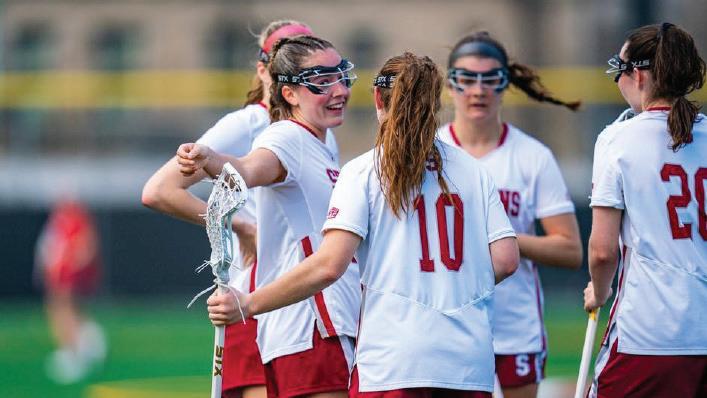
Women’s Lacrosse’s recent victories in the MAC
BY ABBY JACOBS, DIGITAL MANAGER
Women’s Lacrosse hit their third win in a row in the Middle Atlantic Conference (MAC) on Saturday, April 13, when they defeated Fairleigh Dickinson University (FDU) Florham, their 10th overall victory of the season thus far.
The Women’s Lacrosse MAC season began against Misericordia University on Saturday, April 6, and also served as the team’s Senior Day. The game started strong in the first quarter, with the Ducks up by seven at 8-1. The running clock kicked in during the second when the
Ducks took another seven to be 15-1 at the half. Their lead was furthered when first-year Tory Seaton scored six minutes and 23 seconds into the third, followed by senior Emily Leiby with two minutes and eight seconds left on the clock. The Ducks took another four in the fourth, resulting in a 21-2 win. The next MAC win came less than a week later when they took on King’s College on Wednesday, April 10. Sophomore Maddie Hogan saw a career-high eight points with five goals and three assists, her first goal just 39 seconds into the game. Meanwhile, graduate student Zoe Cook and sophomore Stefanie Sellitto each
took five points of their own, with three goals and two assists. The team’s collective effort would push the clock in the first quarter, which they finished up 14-2. The two goals that King’s managed in the first would be all they could secure, as Stevens upped their own point tally by another 11 in the next three quarters. The day resulted in a 25-2 victory and was the fourth game the Ducks have won against the Monarchs. Sellitto dropped another six on April 13 during the Ducks’ defeat of FDU-Florham. Out of the team’s collective 35 shots during the match, 20 were successful. Their opponents only took seven out of their 16 attempts. Cook

managed a goal in the first and third quarters, two in the second, and two assists in the first and third, marking her 200th career point. Other notable impacts on the teams’ success of the day came from Hogan, with three goals and one assist, and sophomore goalkeepers Felicity Heilferty and Emma Guzowski, who made respective two and four saves throughout the game.
Tomorrow, Saturday, April 20, the Ducks will take on Arcadia University at 1 p.m. on home turf for their fifth MAC match, before they travel to take on the University of Scranton in Scranton, PA, on Sunday, April 21 for a non-conference contest.
Men’s Volleyball wins third consecutive MAC Championship
BY RUTHIE MULLISKY, SPORTS EDITOR
The Stevens Men’s Volleyball team has been a dominating force throughout the spring 2024 season, as their overall record now stands at 31-1, as well as 8-0 for in-conference matchups. This was further confirmed by their commanding performance in the Middle Atlantic Conference (MAC) Championships, where they first defeated Arcadia University in the MAC Semifinals on Thursday, April 11, 3-0 and then followed up with another 3-0 sweep against Misericordia University in the MAC Championship game on Saturday, April 13.
In the semifinal game against Arcadia, the Ducks went 3-0, with set scores of 25-17, 25-18, and 25-19. While not only providing an impressive win to advance the team to the MAC Champi-
onships, this game also allowed graduate student Louden Moran to achieve 3,000 career assists. He is only the second player in program history to achieve such a milestone, and only one of five active players across the entirety of Division III to reach this achievement.
In the championship game against Misericordia, once again, the Ducks recorded a 3-0 sweep, with set scores of 25-13, 25-17, and 25-17. This win marks the program’s third consecutive MAC Championship, and it provides the team an automatic bid to the National Collegiate Athletic Association (NCAA) Tournament, where they will have the chance to defend the national championship title they won last year. Additionally, this win adds yet another to the Ducks’ winning streak of 28 games. This win was truly a team effort, and as such,
MEN'S TENNIS
MEN'S GOLF
many impressive individual performances resulted from this game. Junior Koby Sherman was named the Most Valuable Player of the Tournament, his third time in a row receiving this accolade, and it was rightfully awarded, as he tallied nine kills on ten swings with just one error in only this one game alone. Among other strong performances on the team were graduate student Connor Feulner’s six kills on nine swings with just one error and Moran adding 23 assists to his previous milestone-breaking 3,000 assists from the semifinal game. Additionally, junior Sebastian Huyke tallied six assists, while graduate students Nathan Lancia and Feulner, along with senior Carver Weirick, each served an ace. As a team, the Ducks averaged a 0.483 hitting percentage, marking the second-highest hitting percentage of the season so
far. Additionally, the overall team effort truly helped the Ducks secure the win, as nine different players recorded at least one kill in the game.
Following the impressive conference finish, the MAC and the American Volleyball Coaches Association (AVCA) awarded many of the team’s players. Sherman was named MAC Player of the Year and Feulner was named MAC Defensive Player of the year, as well as both being named to the AVCA All-Region III Team alongside Moran, graduate student Percy Bickford, and sophomore Tyler Hoke. Head coach Dan Buerhring earned his third straight MAC Coach of the Year award.
The Ducks will return to play in the first round of the NCAA tournament in a game against Hiram College on Friday, April 19, in Canavan Arena.
STEVENS SCOREBOARD
STATE COLLEGIATE
WOMEN’S AND MEN’S TRACK AND FIELD
Paul Donahue Invitational–D1 Chester, PA 3 p.m.
MEN’S VOLLEYBALL Hiram College Hoboken, NJ 4 p.m.
WOMEN’S AND MEN’S TRACK AND FIELD
Paul Donahue Invitational–D2 Chester, PA 9 a.m.
MEN’S GOLF
Gettysburg Spring Shootout–1 Fayetteville, PA 10:30 a.m.
WOMEN’S AND MEN’S TENNIS DeSales University Center Valley, PA 12 p.m./1 p.m.
FDU-Florham Hoboken, NJ 3 p.m. BASEBALL FDU-Florham Madison, NJ 12 p.m./2:30 p.m.
WOMEN’S AND MEN’S LACROSSE
Arcadia University Hoboken, NJ 1 p.m. Glenside, PA 1 p.m.
MEN’S VOLLEYBALL Hoboken, NJ 6 p.m.
SUN, APR 21
MEN’S GOLF
Gettysburg Spring Shootout–2 Fayetteville, PA 10:30 a.m.
MEN’S TENNIS
The College of New Jersey Ewing, NJ 12 p.m.
SOFTBALL
Montclair State University
Montclair, NJ 1 p.m./3 p.m.
ONE AWAY 5TH OF 10 (A), 6TH OF 10 (B)
SOFTBALL DESALES UNIVERSITY AWAY L (1-4), L (1-9)
BASEBALL DESALES UNIVERSITY HOME L (0-1), W (12-1) MEN'S
(15-8)
5 Friday, April 19
ON DECK IN SPORTS SAT, APR 20 FRI, APR 19
PHOTO COURTESY OF STEVENSDUCKS.COM (SHOT BY DAVE JANOSZ)
DATE TEAM OPPONENT LOCATION SCORE WED, APR 10 WOMEN'S TENNIS SUNY NEW PALTZ AWAY W (6-3) WOMEN'S AND MEN’S LACROSSE KING'S COLLEGE (PA.) HOME, AWAY W (25-2), W (26-4) THU, APR 11 WOMEN'S AND MEN'S TRACK & FIELD TCNJ INVITATIONAL & MULTI–DAY ONE AWAY COMPLETED MEN'S VOLLEYBALL MAC CHAMPIONSHIPS–SEMIFINAL VS #5 ARCADIA UNIVERSITY HOME W (3-0) FRI, APR 12 WOMEN'S AND MEN'S TRACK & FIELD TCNJ INVITATIONAL & MULTI–DAY TWO AWAY COMPLETED SILFEN INVITATIONAL AWAY COMPLETED SAT, APR 13 WOMEN'S AND MEN'S TRACK & FIELD TCNJ INVITATIONAL & MULTI–DAY THREE AWAY COMPLETED WOMEN’S AND MEN’S LACROSSE FDU-FLORHAM AWAY, HOME W (20-7), W (25-2)
LEBANON
AWAY
WOMEN'S TENNIS
VALLEY COLLEGE
W (7-2)
LEBANON
VALLEY COLLEGE AWAY W (9-0)
GARDEN
CLASSIC–ROUND
VOLLEYBALL MAC CHAMPIONSHIPS–FINAL VS #2 MISERICORDIA UNIVERSITY HOME W
SUN,
14 MEN'S GOLF GARDEN STATE
CLASSIC–ROUND
AWAY
10 (A), 8TH OF 10 (B) BASEBALL DESALES UNIVERSITY AWAY W
TUE, APR 16
FDU-FLORHAM AWAY
BASEBALL UNIVERSITY
HOME
(3-0)
APR
COLLEGIATE
TWO
3RD OF
(9-6)
WOMEN'S TENNIS
W (9-0)
OF MOUNT SAINT VINCENT
W
BASEBALL
SOFTBALL FDU-Florham Weehawken, NJ 1 p.m./3 p.m.
California leads in sulfuryl fluoride emissions
BY SEAN ANDERSON, STAFF WRITER
In an effort to combat climate change, the California government has devised plans to actively reduce the emissions of greenhouse gasses. While these plans are in place, California still struggles to work towards this goal in some areas. This can be partially attributed to sulfuryl fluoride, a lesser-known greenhouse gas that California is leading the nation in emitting.
In a recent study led by Johns Hopkins University, it was found that California far exceeds any other states in sulfuryl fluoride emissions. Specifically, the study notes that “California emits 6085% of U.S. SO₂F₂ emissions” which is “equal to 5.5–12% of global SO2F2 emissions.” In order to reach this conclusion, Dylan C. Gaeta, lead author of the published study and Ph.D. candidate at Johns Hopkins, and Scot Miller, co-author and assistant professor of environmental health and engineering at Johns Hopkins, looked at 15,000 air samples collected from 2015-2019 in order to trace the emissions back to their major sources. The researchers also noted a motivation for taking this action, as sulfuryl fluoride has strong infrared absorption properties and a relatively long atmospheric lifespan, so the potential effect on global warming is significant.
The irony is that the California government had previously released the world’s first plan to achieve net zero carbon pollution by 2045. This plan, put in place in 2020, also included plans to cut air pollution by 71%, slash greenhouse gas emissions by 85%, and drop gas consumption by 94%. Additionally, the plan included the goal of creating four million
new jobs in clean energy as well as saving Californians $200 billion in health costs. In regards to the plan, California Governor Gavin Newsom commented, “It’s the most ambitious set of climate goals of any jurisdiction in the world, and if adopted, it’ll spur an economic transformation akin to the industrial revolution.”
Even with this plan in place, why does California continue to emit this atmosphere-altering gas? The answer lies in another environmental issue that plagues many places in Southern California: termite infestations. According to Pest Gnome, a service that connects homeowners with professional service providers in pest issues, the state is at high risk for termite infestations. This is mostly due to the abundant wood resources, high humidity, and warm temperatures of the state in which these pests thrive. In the study led by Johns Hopkins, it is stated that sulfuryl fluoride is mostly used for structural fumigation purposes. In this process, a building is closed off, and a toxic gas is released into the space in order to exterminate termites and other pests that exist in the space. Once the process is finished, the gas is then vented out and released into the atmosphere. While there are disadvantages to sulfuryl fluoride, the study states that it was approved for fumigation purposes in 1959 due to its being less reactive and thus less ozone-depleting than its alternatives. With that being said, Miller notes that “California’s track record shows that it’s been looking at out-ofthe-box, creative ways to reduce its greenhouse gas emissions.” Knowing what the sources are will allow the state to make necessary changes in order for their ambitious plan to come to fruition.
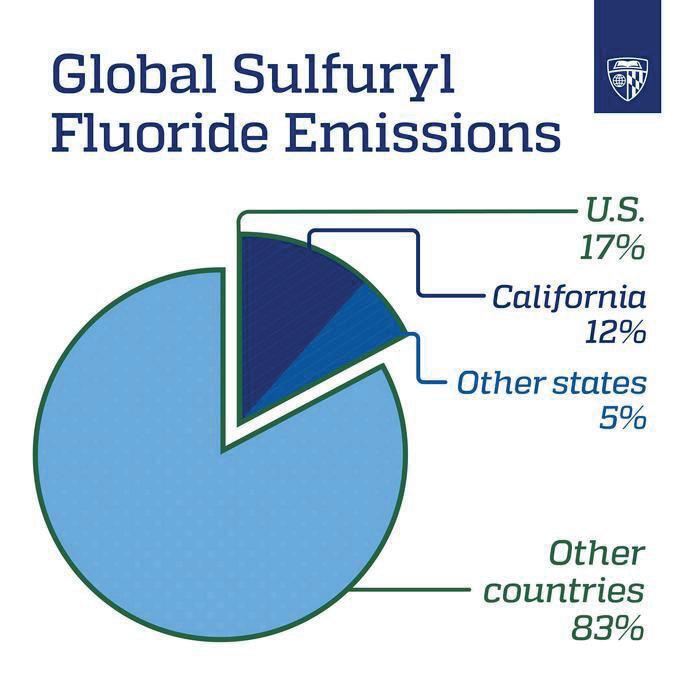
Lucy: A common ancestor of all humans
BY TANYA AVADIA, BUSINESS MANAGER
An existential question all of us may have wondered at some point or another is “Where did humans come from,” and scientists may be closer to answering this with the discovery of Lucy. Lucy is the fossil skeletal remnants of a female Australopithecus afarensis , a distant relative of humans. Lucy’s discovery is pivotal to building our understanding of human evolution and this is why scientists and researchers are still so fascinated with her even though it has been 50 years since her discovery. The fossil that was a landmark discovery of the 20th century was found by American paleontologist Donald Johanson and his research assistant Tom Gray. At the time, Johanson had been a paleontologist at the Cleveland Museum of Natural History. He had embarked on an expedition organized by French geologist Maurice Taieb to Hadar, Ethiopia. On November 24, 1974, Johanson and Gray were walking back to their Land Rover after a lackluster morning. On the journey back, Johanson had seen what would then become Lucy’s arm. Following this, the pair found other parts: a skull piece, a thighbone, part of a pelvis, and vertebrae. All these components pieced together a rare partial skeleton. That night, the team celebrated this finding with the
rest of their camp by drinking beer and dancing while blasting the Beatles song “Lucy in the Sky with Diamonds.” It is through this song that the skeletal remains got the name Lucy.
Lucy is 3.18 million years old. his is extraordinary as it gives researchers a glimpse into the state of hominins at the time.
Geneticists believe that a species between humans and chimpanzees existed after the split occurred between the two groups, and Lucy is likely a very ancient ancestor of modern humans. For the first 20 years after Lucy’s discovery, it was established that her species was the oldest known member of the human family. Fred Spoor, paleontologist at the Natural History Museum of London, stated, “Once upon a time, life was relatively simple because anything before 3 million years was A. afarensis […] (and) it was the mother of us all. That was the gospel.” However, other species were found to be even older than Lucy, complicating the human family line. Tim White, a paleoanthropologist at the University of California, Berkeley, shared how it had become a common belief among scientists that because Lucy had the characteristics of modern humans but was so apelike, her predecessor would have been a chimpanzee. This, however, is certainly not the case.
Another reason why Lucy is a special find is because of the characteristics she shares with modern humans. Specifical -
ly, Lucy had the ability to stand upright just like humans. Chimpanzees, unlike humans, cannot stand upright because they cannot straighten their legs to the full extent, which is what leads them to have a hunched-over posture and walk on fours. Lucy, despite having similarities to chimpanzees, could walk straight, which serves as a useful distinction tool for scientists in mapping out the human family line. While this is a huge breakthrough, so many questions, followed by research, remain to paint the full picture of
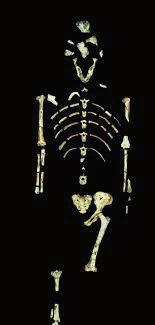
The Great American Eclipse: a rare phenomenon brings Hoboken together
BY JEREMIAH CHINWENDU STAFF WRITER
A solar eclipse is a scientific phenomenon in which the moon passes between the Earth and the Sun. On average, partial solar eclipses happen about twice a year. These are not total eclipses, and they are only visible from certain regions of the world and not at all to others. The solar eclipse that happened on April 8, 2024, was the first time since 2017 that a solar eclipse was visible from the United States.
Dubbed “The Great American Eclipse,” this event was tracked from Oregon to South Carolina.
The eclipse was an event many were eager to witness, either for scientific exploration or simply fascination. There was something for everyone to take away from this experience, and the excitement was felt across the nation. Hoboken was no exception, as people took to parks, rooftops, patios, or any place outdoors where they could view the eclipse. On campus, people gathered on Babbio Patio, Davis Lawn, Edwin A. Stevens Hall, and the bleachers of DeBaun Athlet ic Complex with their friends to get the best view. Some profes sors even canceled or modified their classes during the time of the eclipse to give their students the best chance at viewing. Stu dents in an Organic Chemistry 2 Lab were delightfully surprised to hear that class was canceled due to the eclipse, and students in Astronomy enjoyed a viewing party for the event.
With people all around Hobo ken planning to view the eclipse, it was a struggle for many to get a pair of eclipse glasses. They sold out quickly in online stores, and even local stores like War by Parker ran out of them due to high demand. Many profes sors on campus, specifically those in the physics department, had extra glasses to give, but those were gone just as quickly. Eclipse glasses are crucial for safely viewing solar eclipses, as they protect the eyes from harm ful ultraviolet and infrared rays that can cause permanent dam age. Nevertheless, people who were able to come out for the eclipse shared glasses with their friends and others around them.
Some people with special filters on their phone cameras were even able to take pictures of the eclipse by pointing directly at the sun. Other students were able to take good pictures of the eclipse by focusing their lenses through the lenses of eclipse glasses.
The eclipse lasted from 2:10 p.m. to 4:35 p.m. The highest peak was visible at 3:25 p.m. While people in the path of totality in western states witnessed a total eclipse, with the moon completely covering the sun, those in northern New Jersey saw up to 90% coverage of the sun by the moon at the peak of the eclipse.
The eclipse was more than just a rare spectacle for all to observe. It was also a chance for National Aeronautics and Space Administration (NASA) scientists to study the Earth, moon, and sun. Specifically, they were able to study the sun’s corona, or outermost atmosphere. Astronaut Pamela Melory stated in a conference that studying this region of the sun is important because “‘Things are happening with the corona we don’t fully
lect data that may give insights into the future of our star’.” The opportunity for observations like this are unique to solar eclipses, as they are the points in time when the sun’s atmosphere is the most visible. This goes to show that everyone can gain something meaningful from an experience like this. People all over the nation from scientists and co-workers to friends and loved ones gathered to marvel at the eclipse and watch its progression. The next time we can expect a total solar eclipse to be visible from the contiguous United States will be in 2044, making this eclipse a very special and remarkable event for everyone lucky enough to witness it. New Jersey can expect to see a couple partial solar eclipses in the next few years, but none will have as much coverage as this one. Those seeking the thrill of being in the path of totality without leaving the state, will have to wait until 2079. With so much to enjoy and still so much to learn, people now wait patiently for the next total eclipse happening in

6 Friday, April 19 Science INTERESTED IN SCIENCE JOURNALISM? Join our Science writing team! Reach out to Riyana Phadke, Science Editor (rphadke@stevens.edu) for more information – No experience necessary to write • thestute.com/category/science –
PHOTO COURTESY OF WWW.EUREKALERT.ORG
PHOTO COURTESY OF BRUCE FRUMKER
Opinion
MIND OF A FRESHMAN
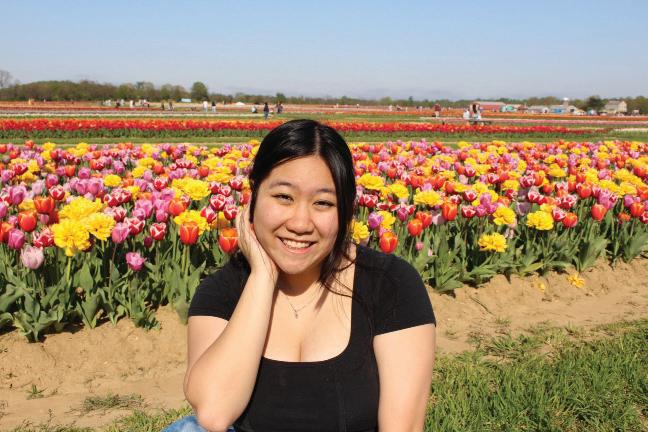 BY NICOLE CHEUNG ‘27
BY NICOLE CHEUNG ‘27
We’re in that awkward part of the semester where classes are having their final tests before actual finals, you’re being forced to speak to people you haven’t talked to all semester for a project, and your four overdue
assignments are lingering over your head. I’ve kinda been thinking to myself, there’s no way I don’t have ADHD. Like, it’s so intensely hard to concentrate on anything. Like I’ve really tried everything: throwing my phone across the room, complete silence, classical/ calming music, background noise, studying with friends, sitting alone, and nothing works.
I have this intense need to be busy all the time, so I joined a lot of clubs to take up my time, and it worked for a bit. But now that the musical season and my sorority intake process are over, I find myself feeling
empty and useless. I was distracted by a lot of things, and now that my academics are my only thing to focus on, I’m feeling kind of directionless because I just don’t see the point of it all. I’ve never been the smartest or the dumbest. Just kinda in the middle, but I just have to try harder than most people. I’m feeling super unmotivated to do anything, really, and everything is so tiring. Sorry for the kind of depressing life update this week, but I wanted to write something as my opportunities to write in this column dwindle down. See you all in two weeks for hopefully a better article!
SENIORITIS Dorm room dependencies
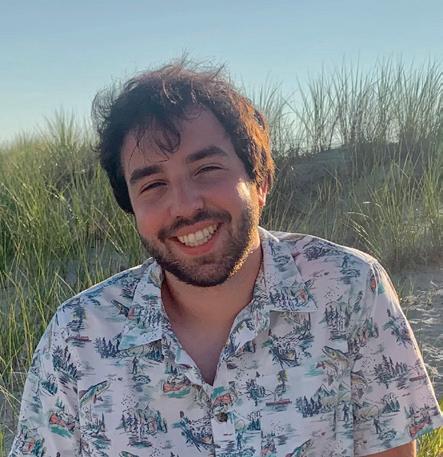 BY ETHAN KLESCHINSKY ‘24
BY ETHAN KLESCHINSKY ‘24
Having been through almost the entirety of college at this point, I am reflecting on the ways I have spent my time. When spending time trying new things, it is super easy to get hooked. I have
spent a lot of time on things that were a total waste of time. It is super easy to get addicted to new and fun things in general, but during college, everyone is even more vulnerable to addiction. I feel like when people talk about addiction, they are normally talking about substance or gambling addiction. However, addiction plays a much bigger role in the average person’s everyday life than you may think. The biggest addiction I have faced during my time here has been TikTok. For the past few years, I can piss away over a day’s worth of time every week, mindlessly scrolling. There is some-
thing in that app that makes it addictive, like drugs, not that I would know how addictive drugs are. It has been incredibly frustrating seeing so much time wasted away for no purpose whatsoever. It is a hard thing to manage because, to a certain degree, I very much like spending time on social media to keep up with everything going on in the world. But it is so easy to use to an absolute extreme that it is very easy to get sucked in. Even in the past couple of weeks, I have spent most of my time between classes and meetings aimlessly scrolling for no reason other than to fill the space in my day, when
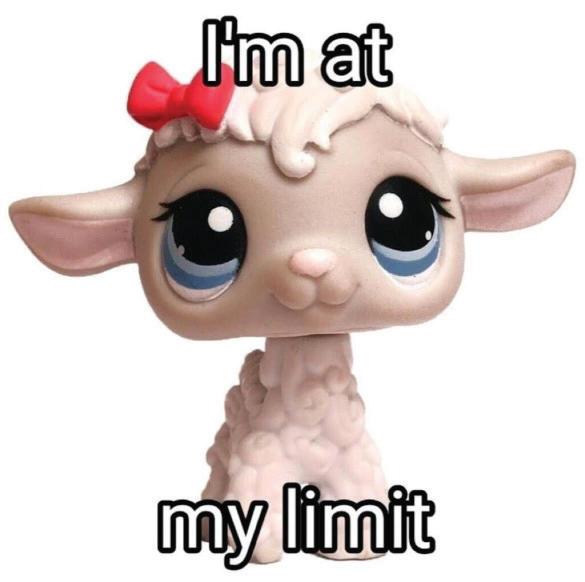
I could have easily spent my time pursuing hobbies or working on homework. So, this past week, I felt the need to finally take action. I deleted the app for the first time and am currently going strong and occupying my time with things that aren’t social media. These past few days, I have had a lot more free time and am beginning to search for new things to spend my free time on. Not much of an improvement, but I have been watching more TV, and I think more long-form content is helping to heal my brain from the rot of constantly watching one minute videos over and
COMIC CORNER
over again. Other than that, I have been trying to get my work done quicker than usual because I have been a habitual procrastinator for years, which has been beneficial so far. But by the time you’re reading this, I probably gave up and went back to my old ways. But I think for now I will keep my hopes held high and continue to try to find things that make me happy. There are many different forms of addiction. Some should be treated much more seriously than others. But I recommend that you all reflect on what you may have been up to lately that may be forming into or ac-
tively a habit that would be best for you to break. Use the people around you and try to replace the habit you are trying to get rid of with a new and better one. It genuinely is super easy to get hooked on things that aren’t great for you, but if you work to find balance in your life and manage how much time or how frequently you do certain things, you are setting yourself up to be in a good place. Admitting you have a problem is the first step of action to change your ways to better yourself for the future. I wish you all luck in curing your addictions, however strange they may be!
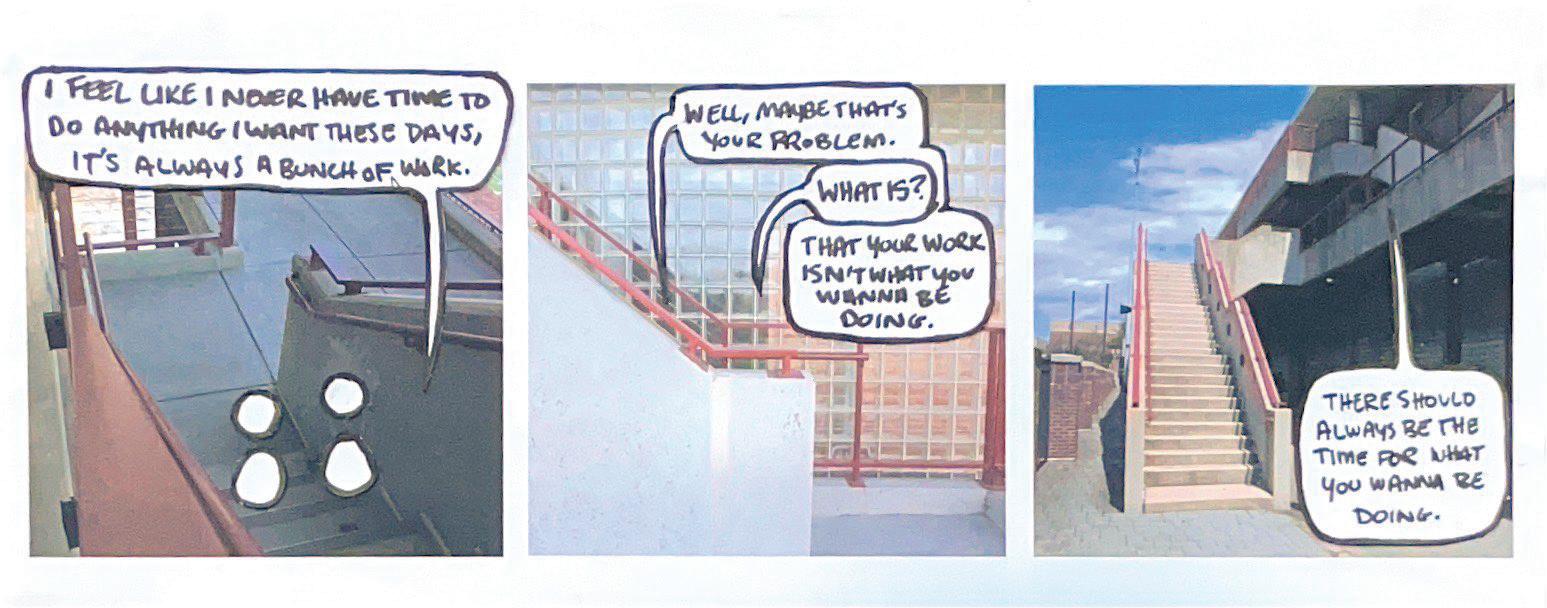
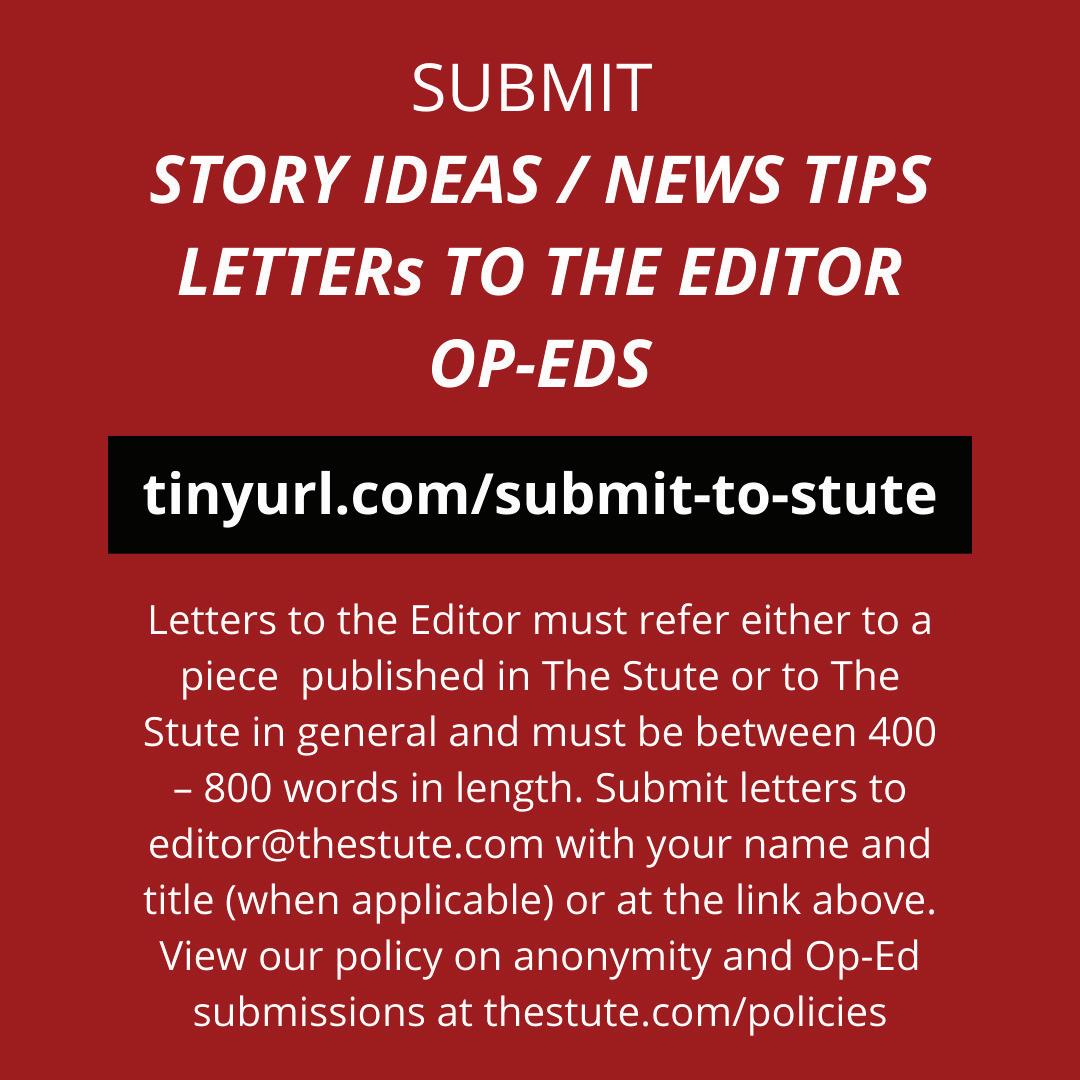



7 Friday, April 19
PHOTO COURTESY OF WORTH.FANDOM.COM
Opinion
BOOK OF THE WEEK
Past predictions of present problems: “The Machine Stops”
 BY MADISON HELLER ‘27
BY MADISON HELLER ‘27
There is a deep-seated love for speculative fiction, which means stories where we can recognize ourselves, if not the world that we are in. This contains the entire genre of fantasy but also large chunks of horror and sci-fi. It is the last category mentioned there that is often looked towards for predictions about the future. I want to bring attention to an uncommon short science fiction story that, on some level, feels prophetic towards our modern-day issues of loneliness and separation that arise from increased technological dependence.
“The Machine Stops” was written in 1904 by E.M. Forster. It is a short story that details an era of humanity that, due to their advancements in technology, rendered their own Earth uninhabitable to them. So, they have become dependent on a large technological system simply referred to as The Machine. Each member of the population lives alone in a room where The Machine supplies all of their needs, from sustenance to frivolities, and constantly new machine-generated music for their listening pleasure, for instance.
There are many interesting and concerning parallels with our modern world and its technology. These people communicate with each other through a screen in their room that allows them to see the faces and hear the voices of others across The Machine. To be blunt, this is literally what FaceTime or Zoom is. Everyone spends all of their time listening to short lectures, never more than five to fifteen minutes long. Which is, quite frankly, the envisioning of TikTok and the gradual shortening of attention spans due to constant instant pleasure.
But some things within the narrative have, thankfully, yet to pass and become the norm. For these humans, it is incredibly odd to want to see someone in person and completely taboo to touch them. Most children never meet their parents, and vice versa.
In this fashion, humanity continues on with this type of existence, living under the surface of the Earth. All the while The Machine slowly decays around them.
Until one day, The Machine stops. For a story written in 1904, there are objectively an insane amount of parallels with our modern anxieties about our own technological use as well as what technologies exist now. Forster was, in my favorite colloquial phrase, struck with the gift of prophecy. From a globalized world interconnected by technology, a computer-like apparatus that is equipped with a combination of Zoom and TikTok is one of the earli-
FROM SOUQS TO SCHOOLS
Arab superstitions
 BY RACHEL ABRAHAM ‘26
BY RACHEL ABRAHAM ‘26
est depictions of artificial intelligence as we know it in fiction. It is terrifyingly accurate in so many ways that when I first read it, I took a step back and tried to evaluate what I was do ing with my life.
To the society in that world, The Machine was a type of God, something to be praised and worshiped for knowing all and doing all. And I think we do the same. I implore anyone in terested to read this short story, it is 25 pages long and in the public domain. What I want anyone who reads this, especially at a school that is as technologically centered as Stevens, is to ask themself a simple question.
DOUG’S CAR CORNER
What is a transmission?
 BY DOUG SOUSA ‘24
BY DOUG SOUSA ‘24
engine to the wheels.
The gear train is driven by this input shaft and alters the speed of the transmission’s output shaft through the beauty of gear ratios. I could totally geek out about gears, so maybe I’ll save that for another article. This is also where the distinction between manual and automatic cars comes from, based on whether the driver picks the gear or if the car’s computer does so.
ous loads throughout their operation.
What would you do if The Machine stopped?
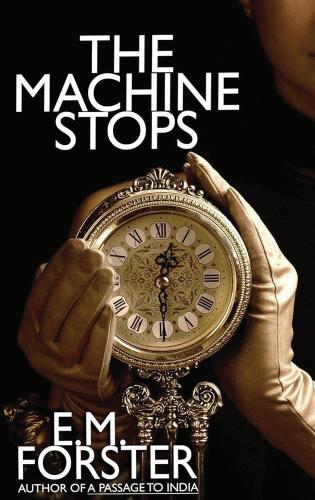
But there’s a lot more to it than that! Whether it’s a manual or an automatic transmission, there is a ton of incredible engineering that goes into getting the power from the engine to the wheels. The group of parts that accomplish this is called the drivetrain, which includes the transmission, differential, and driveshaft or axles. Basically, everything between the engine and the wheels. We’ll focus on a car with the engine in the front and the driven wheels in the rear since there are slight differences between different layouts. However, it’s pretty much the same idea regardless of which wheels the engine drives.
So, let’s break it down a little. The transmission is the component directly connected to the engine and changes the output rotation speed through a series of gears that can be shifted depending on what the driver needs the car to do. The input shaft of the transmission is directly connected to the crankshaft of the engine, which is the part where the pistons rotate thousands of times per minute (think RPM! Revolutions Per Minute).
I totally believe in
er had just vacuumed and mopped (ah, yes, certified clean freak). And every time I took off my shoes and accidentally left them upside down, my mother would yell, “Haram!” and quickly adjust them. This really confused me as a kid; the word “haram” has many meanings, and I never thought an upside-down shoe could be one of them. I heard “haram” while being yelled at when I didn’t finish the food on my plate or if I yelled at my brother for something stupid. That made sense to me.
STEVENS’ CHEFS RECIPE CARDS
But shoes? Not so much. That’s just one of the many Arab superstitions I picked up on over the years. And now, as a soon-to-be 20-year-old, I rush to adjust any pair of shoes that are upside down (I can’t help it; it’s drilled into my brain).
I don’t consider myself a clumsy person. Once in high school, I dropped my (just purchased) Dunkin’ coffee all over my front door. I was pissed. My mother was happy and hit me with the “kher Inshallah” (good news, God
Back burner tomato sauce
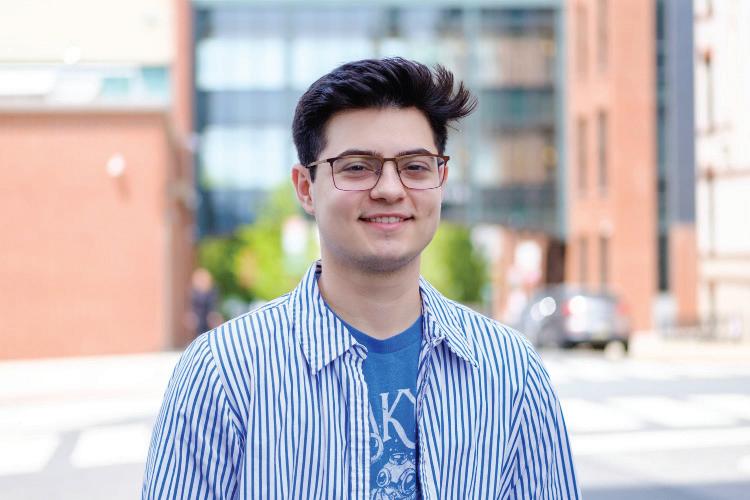 BY KAYDEN CANNILLA ‘24
BY KAYDEN CANNILLA ‘24
Italian food is so simply to make for me. I probably have a lot of learned intuition from watching my family cook, but when writing down these recipes, there truly are not that many steps. When you see ingredients written down, many authors will omit water and
salt because these are staples of cooking that should be assumed. In Italian cooking, salt, pepper, garlic, and onion should be assumed; I hardly count those as ingredients. It doesn’t even have to be fresh; you should have garlic powder and onion powder in your spice cabinet at all times. Maybe you look at this list and think it’s seven items, but to me, it barely counts as a recipe because it’s just tomatoes and seasonings.
You should make your tomato sauce because canned tomatoes are dirt cheap compared to buying prepared tomato sauce. If you’re making meatballs to go with it, you can easily multitask and prepare these dishes alongside each
other. You’ll probably want onions and garlic for your meatballs, too, so you can cook them together and split the portion between the sauce and the meatballs. Then, you can put the tomatoes on before you form the meatballs and have them simmer in the background the whole time while they’re baking. When the meatballs are halfway done, boil water for your pasta, and all three will be ready right around the same time. I would say a typical 28oz can of tomatoes will lightly cover a full box of spaghetti. Often, grocery stores will sell the 14.5oz cans for discounts if you buy three, which to me is the perfect amount for a full box, but try it and make your own judgment.
willing). So, spilling coffee means good news is coming. A few days later, I was accepted into Stevens. Coincidence? Probably. On the bright side, I never get mad over spilled coffee anymore.
The first time I spent New Year’s Eve in Lebanon was with my little brother and grandmother in our tiny apartment. My grandmother picked out a few old pieces of glassware and set them aside for us. Like the Greeks, Lebanese people believe that smashing old glassware sym -
Next, the output shaft connects to the driveshaft, which is basically a big cylinder of metal that transmits the rotation from the transmission at the front of the car to the differential at the back of the car. Front-wheel drive cars accomplish this through axles, which require much less strength due to the reduced distance between the transmission and the wheels and the fact that the power is split between two axles instead of one driveshaft. Both of these parts do have some pretty cool engineering built in as well since they need to account for angles between the output shaft and the differential (or the wheels of a front wheel drive car) and vari-
After the driveshaft, there’s the differential. This part is located between the two rear wheels and essentially changes the direction of the rotation by 90 degrees, going from front to back to each side of the car — the wheels. Differentials utilize a complex gear system (I love my gears) in order to accomplish this with minimal mechanical power losses. The differential also splits the power between the wheels as needed. The outside wheel will need to rotate faster than the inside wheel during a turn, as each wheel follows a slightly different path throughout the turn. The differential has axles that connect to the wheels, completing the drivetrain!
There is still a LOT more depth to each of these parts, but this article gives a basic understanding of how your engine’s power gets to the wheels and moves your car. The drivetrain is one of my favorite parts of how a car works, so I hope you learned something and enjoyed reading!

bolizes leaving the past behind and warding off any evil. Then, when the clock struck midnight, we all went outside and threw all the glassware from our balcony. Mind you, the entire street was filled with apartments like ours, so it was just glasses flying from every balcony in every direction. My brother and I stayed outside to watch, even after our grandmother yelled at us to get back inside. I’m still shocked that we came out with zero injuries.
And, of course, how
could I forget Nazar (AKA the evil eye)? I’m a little iffy on this one. I used to believe in it, or at least wanted to because it looked so cool, especially as jewelry. But some people take it too far. They think everyone (including, but not limited to, their father, mother, sister, cousin, neighbor, and the neighbor’s dog) is jealous of them. And because I’ve found these people so insufferable, I’ve slowly distanced myself from it all. I guess you can choose what superstitions you believe in.
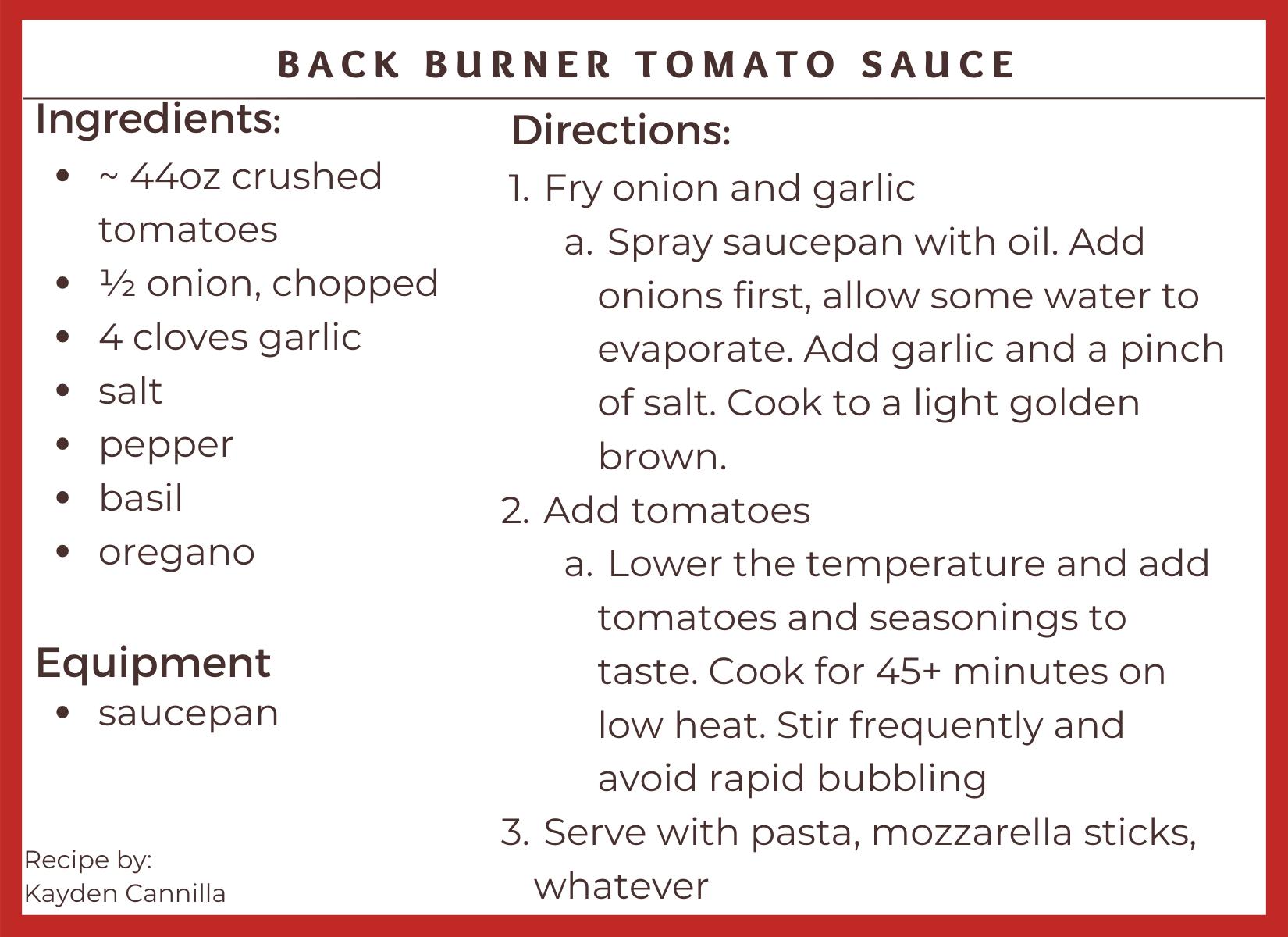
8 Friday, April 19
Like every Asian household, shoes needed to be off when I entered the front door — sometimes, outside the door, if my moth -
PHOTO COURTESY OF AMAZON
PHOTO COURTESY OF HALLCARS.COM
Opinion
GIRL
(ISH) TALK
Female health issues are terrifying
 BY CLAIRE HANNAN ‘24
BY CLAIRE HANNAN ‘24
Did you know that your ovaries can just kill you?
Like not even just cancer, there are multiple ways your reproductive system can self-destruct. As you get old-
er, you start to learn more about the health issues that you need to start paying attention to. All body parts can kill you (probably), and that sucks, but people tend to feel more comfortable talking about certain body parts, which makes it easier to be aware of signs and symptoms. Reproductive organs have more stigma around talking about them, so we’re less likely to know about potential issues even if they’re common.
I recently learned about a reproductive health issue that is surprisingly common: ovarian cysts. I understand
why people don’t talk about them, and they sound pretty gross. The word “cyst” is on par with words like “moist” and “phlegm,” in my opinion. Still, one in 10 females will develop an ovarian cyst in their life. This is even more common than appendicitis, which about one in 13 people experience. Still, when a woman experiences a sharp pain in their abdomen, they’re probably going to suspect appendicitis when it’s more likely that they have an ovarian cyst, which shows very similar symptoms. Ovarian cysts can do a lot of bad things; they can rup-
ture, cause ovarian torsion, or they can get really big and cause discomfort. A few months ago, I thought I had appendicitis, but after a tour through multiple Hoboken urgent cares and a CT scan, I was told that I had a pretty large ovarian cyst. At the time, there was nothing that anyone could do, and I had to wait to see if it would go away. For a while, I thought that the cyst had gone away until last Thursday. This time, I knew that I didn’t have appendicitis, and I went straight to the Hoboken University Hospital. It was lucky that I knew what was hap-
EXPLORING: A STUDENT’S GUIDE TO NEW YORK CITY
pening because I ended up needing surgery for ovarian torsion. If I didn’t already know I had an ovarian cyst, I wouldn’t have been able to make sure I got the right tests, and it probably would have taken a lot longer to get accurate treatment. For ovarian torsion, you’re supposed to get surgery around eight hours after symptoms start to have the best chance of keeping your ovary. I had great care at the hospital and knew exactly what was happening to me, and it still took around 30 hours for me to get surgery. I’m lucky that everything turned out fine,
The High Line: the perfect blend of nature and city
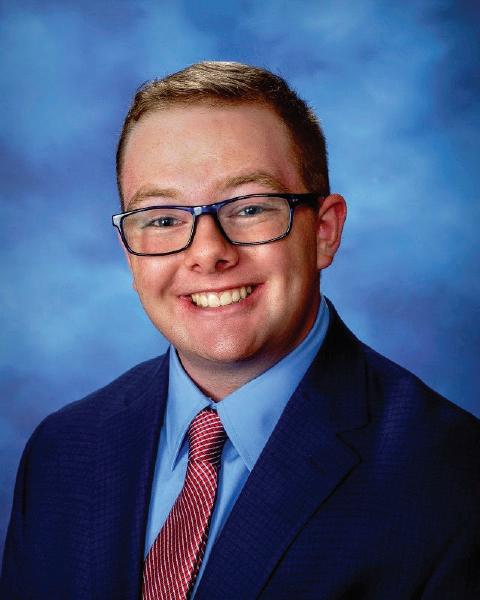 BY EVAN PAPAGEORGE ‘26
BY EVAN PAPAGEORGE ‘26
The High Line is one of the most fantastic places on New York City’s skyline. It is a testament to human ingenuity and ambition that often overshadows the natural world amidst its concrete jungle. Yet, nestled amidst the bustling streets of Manhattan, a remarkable example of how environmental stewardship emerges from the High Line, an exemplary topic for the Earth Day edition. Whether it be the flowers overtaking the old rail ties or the native plants, it is a highlight of New York City on Earth Day. Initially an elevated rail-
way line, the High Line was transformed into a vibrant public park, breathing new life into the cityscape while championing sustainability and environmental consciousness. As we celebrate Earth Day, the High Line is a beacon of hope and inspiration, showcasing the profound impact of repurposing urban spaces for ecological benefit.
Stretching for 1.45 miles along Manhattan’s West Side, the High Line offers visitors a unique perspective, meandering through gardens teeming with native plants, artworks, and panoramic city views. But beyond its aesthetic appeal, the High Line serves as a model for sustainable urban development, mitigating the environmental challenges urbanization poses. Containing museums and small/local businesses, it is a great place for Stevens students to explore nature and the city, and go shopping.
Central to the High Line’s success is its commit-
ment to biodiversity. By incorporating a diverse array of plant species indigenous to the region, the park fosters ecosystems that support local wildlife, including pollinators crucial for urban agriculture and biodiversity conservation. Visitors can witness this flourishing ecosystem firsthand, with bees buzzing amidst blooming flowers and birds soaring overhead, highlighting the symbiotic relationship between nature and urban life.
Moreover, the High Line serves as a green oasis in the heart of Manhattan, mitigating the urban heat island effect and improving air quality. The park’s vegetation absorbs carbon dioxide and releases oxygen, combating air pollution and providing much-needed respite from the concrete heat. The High Line is a beacon of nature’s power to rejuvenate and heal in a city with scarce green spaces. At times when non-stop midterms and club meetings, the High Line is a quick PATH ride to a nice
ADVICE FOR BROKE COLLEGE STUDENTS
Look out for sales!
 BY HIMA THUMMALA ‘26
BY HIMA THUMMALA ‘26
As we reach the midst of spring, there is a strong need to ditch the winter jackets and bring on the sunglasses. Although you have your hats, sunscreen, and glasses, the winter jacket, along with your other cold-gear-based belongings, sit in the depths of your closet, piling on dust. But then, again, when November rolls through, and the air turns chilly, it’s time to pull them out. The most unfortunate thing about this routine is that you might find a tear in your winter scarf, or maybe your winter jacket had shrunk in its wash before you had stored it away. Now what? The best decision for that moment would be to go on a hunt for a new jacket so you’re not caught up in the cold weather, but the prices will be higher than usual with the peak of the season when everyone is in a rush to purchase new apparel. So what is the best method of combating, or better yet, avoiding be -
ing faced with this predicament in the first place?
Clothing goes in and out of style, similar to how prices go up and down through the year. This fluctuation is mostly caused by the increasing demand for the product, as is the price. Now, it would be so much easier for the average consumer if the number of products made online had to increase when the demand for a product goes up, but unfortunately for the customer, the price does most of the time, too. This is where planning ahead comes into place. When the season starts to end, brands need to make the best of their merchandise and production by making prices cheaper, or sometimes a lot cheaper, to attract more purchasers and make some sort of profit off of their clothing. Because if not, all the money that was invested into making these products would go somewhat to waste. So, searching for these deals at the end of the season is critical. All you have to do is purchase them when they are more affordable and fall within your budget, or maybe even cheaper, and hold onto them for a year!
Now, this might seem like an obvious concept, but why isn’t it done more? Many don’t engage in the act of purchasing items earlier on because
they never know if they will still want to use them in a year. What if it’s not their style anymore, or they find another jacket they like much better later on and that they want to purchase? So you have to be willing to make a commitment to this item. Even then, you can always thrift or donate the clothing if you do not want it for some sort of reason that is financially valid. But if it is just because you like another item better and don’t dislike the cheaper one that you had bought on sale last year, try to not ditch it if you’re still willing to use it. It should not be put aside as an excuse to spend more money. There needs to be a sense of validity behind the action if this sort of situation does arise.
But how to decide what you should buy now that you might need in a year from now? While it’s simple, just look at what you use on a daily basis. Then you check for sales. But don’t wait too long! If you are trying to look for a winter jacket at the end of May, it might be difficult to find a cheap price because there would be a low supply of winter jackets at that time as spring clothing is in season. There is a chance that the lower the supply, the higher the prices would be at that time.
walk, a quick snack, and to take in nature.
Beyond its ecological significance, the High Line embodies principles of sustainability and environmental stewardship in its design and management. The park employs sustainable practices such as rainwater harvesting, utilizing green infrastructure to capture and reuse rainwater for irrigation, reducing strain on the city’s water supply, and mitigating stormwater runoff, which can contribute to water pollution.
Additionally, the High Line prioritizes waste reduction and recycling, minimizing its ecological footprint through composting initiatives and using recycled materials in construction and maintenance. These efforts demonstrate a commitment to environmental responsibility and inspire visitors to adopt more sustainable practices in their own lives. With examples of sustainable buildings and intentionally designed paths, a
civil engineering student like myself is in awe as I wander through.
The High Line’s impact extends beyond its physical boundaries, catalyzing broader conversations about the role of urban green spaces in fostering environmental awareness and activism. Through educational programs, community engagement initiatives, and partnerships with local organizations, the park empowers individuals to become advocates for environmental justice and sustainability, mobilizing collective action to address pressing environmental challenges facing cities worldwide. Additionally, with easy access to many museums like the Whitney Museum of American Art and Museum of Illusions, it is a great place for Stevens students to learn more about potential topics of study.
As we commemorate Earth Day, the High Line poignantly reminds us of the interconnectedness of
but a lot of people don’t have that outcome
Other women’s reproductive issues are even more stigmatized, like ectopic pregnancy, endometriosis, and STDs. Not knowing about the signs of these conditions can delay treatment. Most of the time, not acting quickly enough can result in losing your ovaries or uterus and can even lead to damage to other parts of your body. I think that we should be talking about reproductive health issues more, the same way that people spread information about any common condition.
urban and natural ecosystems, urging us to reimagine cities as spaces prioritizing harmony with nature. In the face of climate change and ecological degradation, the High Line offers a vision of hope and possibility, demonstrating that even in the heart of a metropolis, nature can thrive, and environmentalism can flourish.
As visitors stroll along the High Line, surrounded by the sights, sounds, and scents of the natural world, they see the impacts of their responsibility to protect and preserve the planet for future generations. With the benefits to Stevens of being accessible from all Hoboken to 33rd St. PATH train and many eateries that take GrubHub Dining Dollars, the High Line is a must for students. In this urban oasis, amidst the hustle and bustle of city life, the High Line beckons us to embrace our role as stewards of the Earth, inspiring us to cultivate a more sustainable and resilient world for all.
BY OFF CENTER OFF THE PRESS
Famous people
-Satire-
Over the course of many years, ever since its founding in 1870, Stevens has been the place where many famous people came to study and learn about technology, like Frederick Winslow Taylor, Henry Gantt, Mark Crispin, Frederick Reines (wow, two Fredericks!), and Alexander Calder. However, what many people don’t know is that there were a lot of famous people who visited Stevens even before it was initially founded in 1870, and in fact, it was due to these famous people that Stevens was actually founded. In this issue, we are going to list some of the famous people who visited Stevens and helped aid in making it an official and influential university in our present day.
The first person that we should mention who visited Stevens was Benjamin Franklin. Benjamin Franklin was known for being a famous patriot during the American Revolution, as well as being a famous scientist who discovered that metal conducts electricity, like how a conductor conducts an orchestra. However, what most people didn’t know was the role that Stevens played in shaping Benjamin Franklin’s mind. For example, Benjamin Franklin went to Stevens to study physics and learned that you
needed wind in order to fly a kite. Before that, Benjamin Franklin thought that the only way to fly a kite was by launching it out of a cannon to get it into the air before it fell to the ground. Without this important discovery made at Stevens, Benjamin Franklin would not have been able to learn about the properties of electricity.
Another person that we should mention that visited Stevens was Leonardo Da Vinci. Leonardo Da Vinci was famous for painting famous portraits such as the “Mona Lisa” and “The Last Supper,” as well as creating concepts for potential inventions of the future, such as flying machines, armored military vehicles, and inventions that were meant to capture solar power. What many people didn’t know was that Leonardo Da Vinci actually studied at Stevens for a brief moment in his life, which helped him with the conceptualization of designs that were realized at some point in the future. For example, before going to Stevens, Leonardo decided to use his saliva to paint his portraits before learning at Stevens that the proper way to draw images was using ink. In addition, Leonardo Da Vinci’s original ideas of innovations included the wheel, the house, and the boat before people at his time pointed out those already existed. Stevens
helped him exercise his creativity, and he came up with his designs for potential machines of the future.
The final famous person that we should mention that visited Stevens was Santa Claus. Many people didn’t know that most of Santa’s magical things, such as the sack of endless presents, his flying reindeer, and his toy factory, were all created due to the things that he learned at Stevens. Before he used flying reindeer, he used regular reindeer. Before his sack of endless presents, he had a sack of endless pasts and a sack of endless futures. Before his toy factory, he had an expensive student debt factory, so everyone at Christmas at the time received expensive student debts they couldn’t pay off instead of presents. At Stevens, Santa Claus learned about aerodynamics and biology, so he used flying reindeer instead of regular reindeer. Santa learned about space and matter, which helped him replace his endless sack of futures and an endless sack of pasts with an endless sack of presents. Finally, after receiving a giant student debt, he learned that people didn’t like student debt and instead gave everyone toys for Christmas.
In conclusion, we see how Stevens changed these people before it became an actual college.
9 Friday, April 19
that you didn’t know went to Stevens
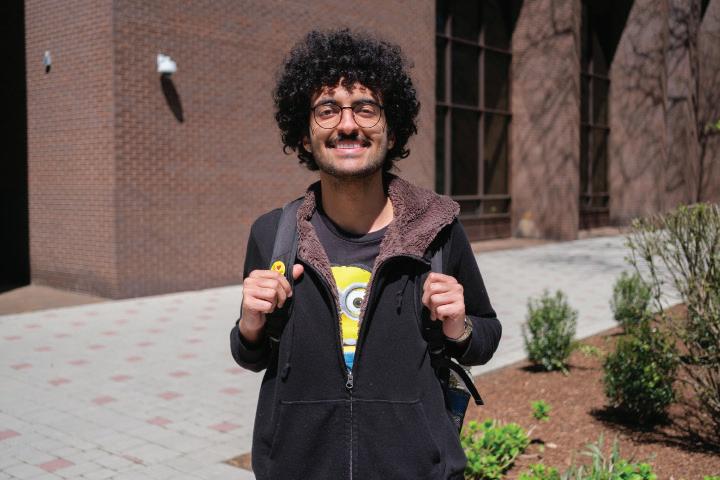
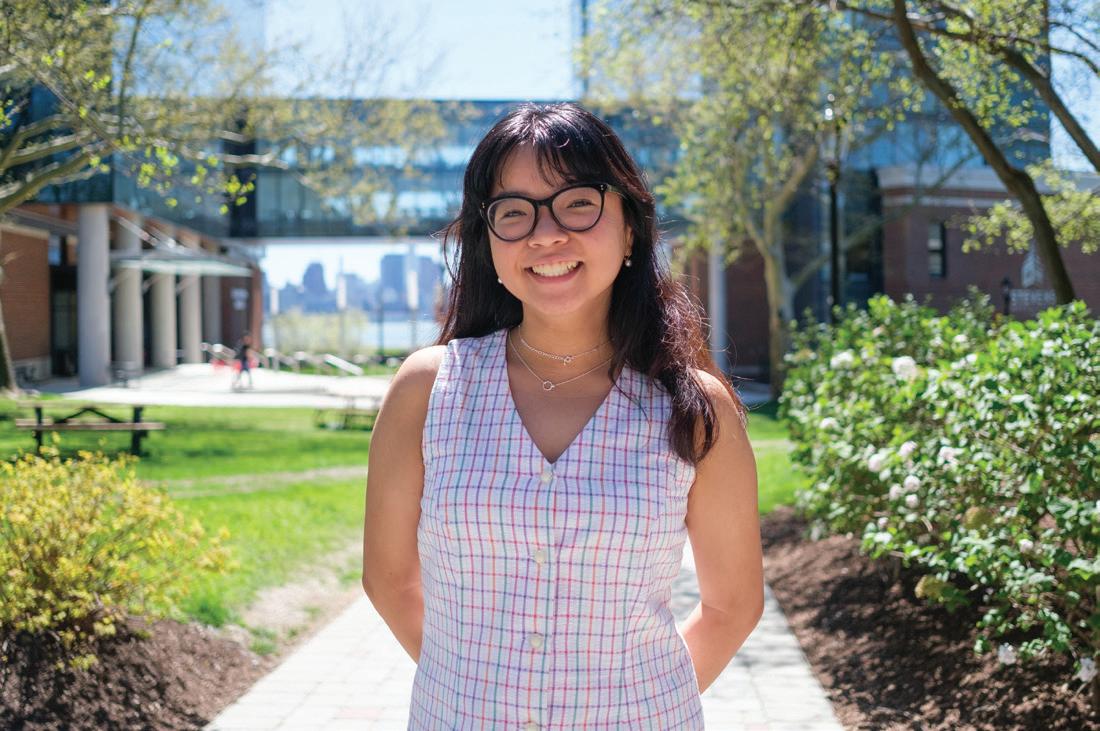
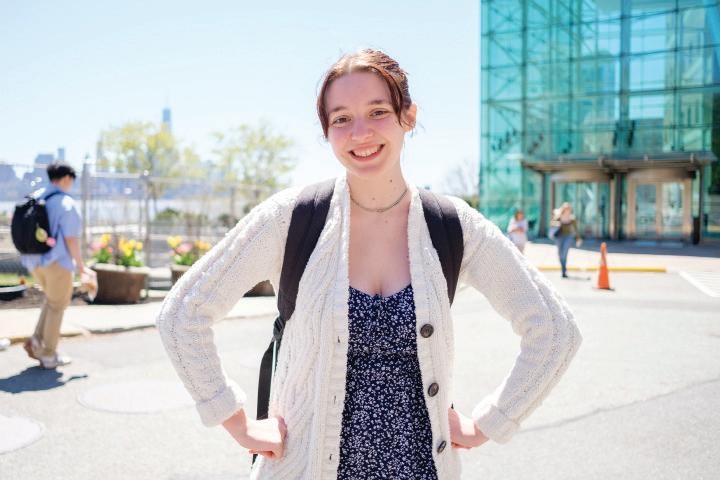
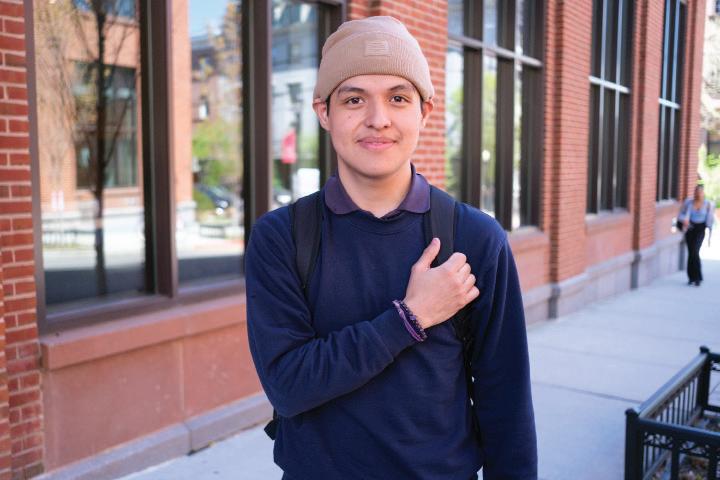
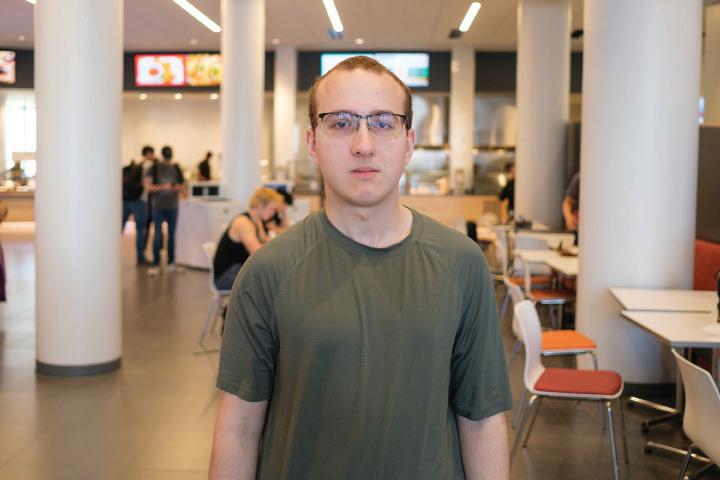 By
By
What do you think is the most overrated song at the moment?
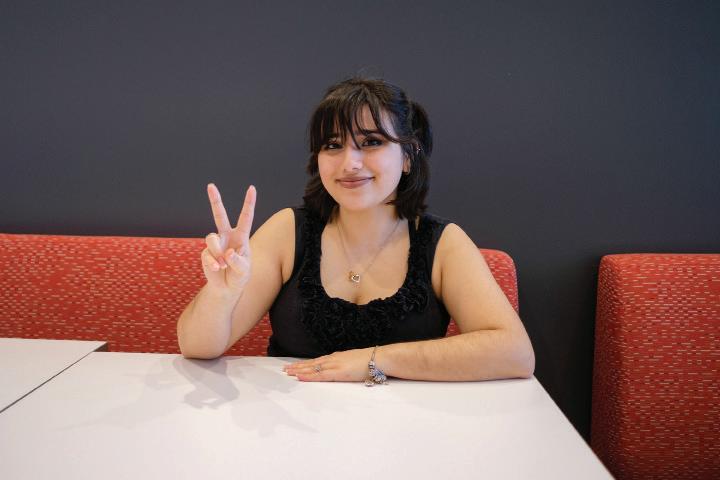
Crossword by Jack Scherban

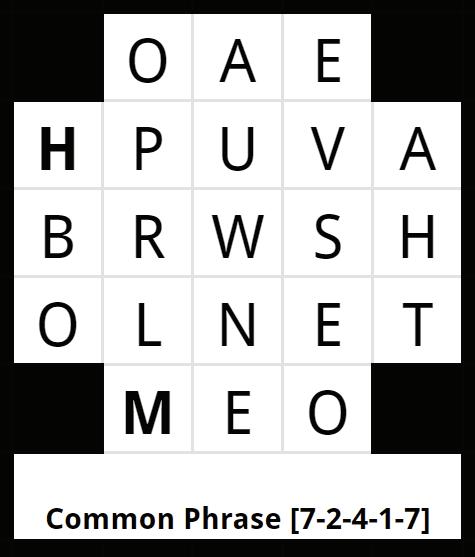
Sudoku
Difficulty: Moderate

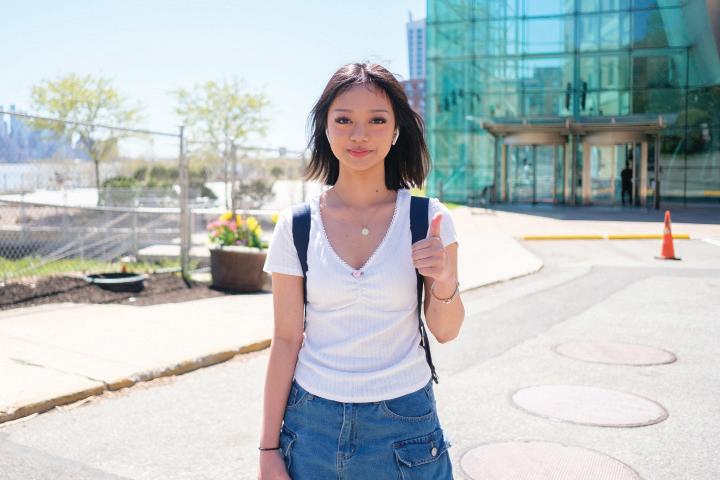
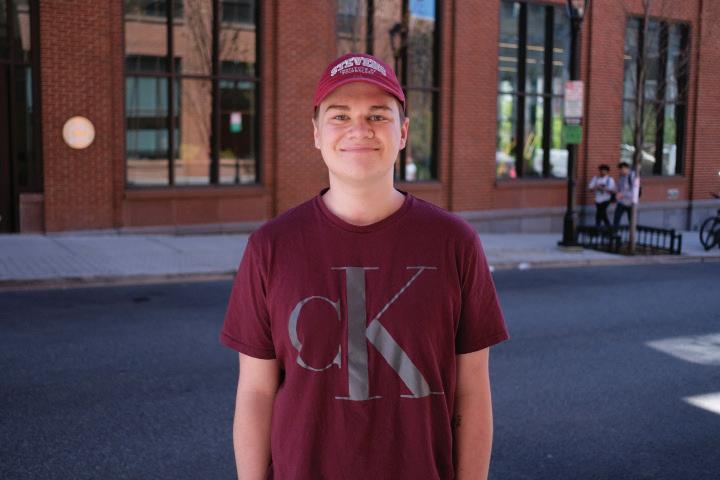
Sequences
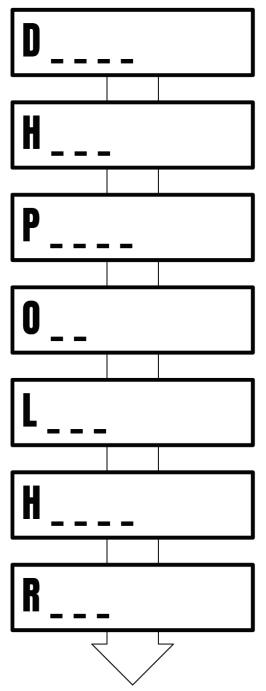
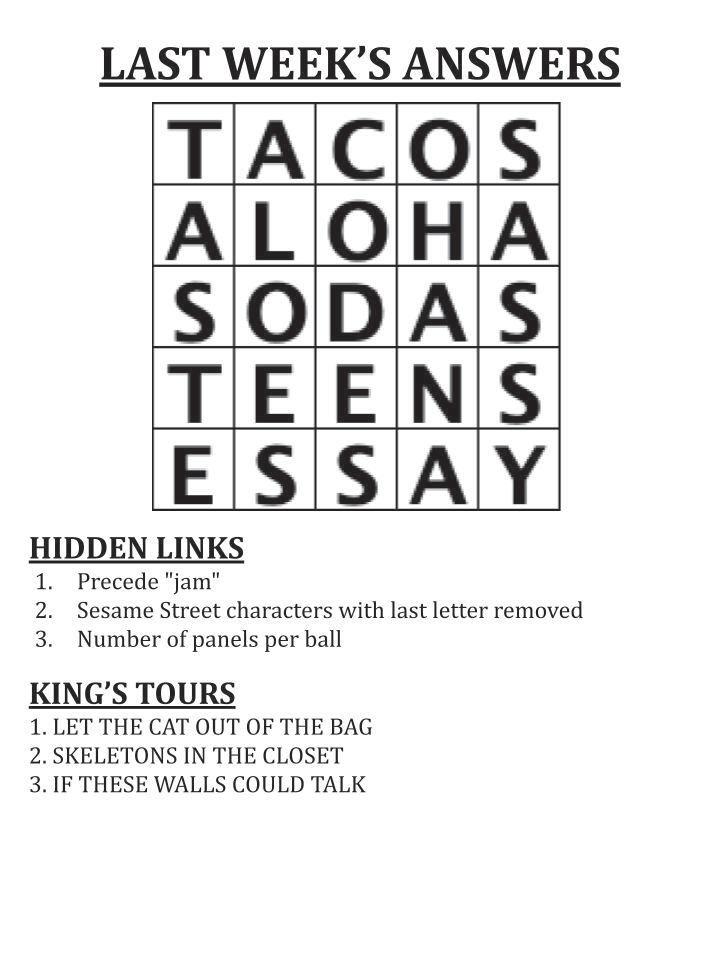
10 Friday, April 19
Campus Pulse
Sara Wolf ‘25 “Yes And by Ariana Grande.”
Maycol Fernandez ‘26 “Karma’s a B*tch.”
Aden Vishnevsky ‘26 “Anything by Taylor Swift.”
Alicia Cardido ‘24 “I don’t listen to the radio, so I don’t know :3 “
Collin Smith ‘26 “Hot Cross Buns.”
Rheanne Marquez ‘26 “I don’t listen to overrated music. I’m an underground girlie... Jk.”
ROVING REPORTER
Rafael Lee Li and Mia Petrolino
Belal Eltemsah ‘26 “Highkey Carnival except for Carti’s part.”
Isabelle Villanueva ‘26 “End of Beginning by Djo. It was a good song and then it got tiktokified.”
ACROSS DOWN
King’s Tour This is a King’s Tour puzzle. Traverse each • • • Chain Reaction CLUES • license to Mike Tyson’s • • With “The”, cartoon
“You get money
you land on Free Parking” in ?
Hidden
? ? Only Connect
•
when






















 BY NICOLE CHEUNG ‘27
BY NICOLE CHEUNG ‘27
 BY ETHAN KLESCHINSKY ‘24
BY ETHAN KLESCHINSKY ‘24




 BY MADISON HELLER ‘27
BY MADISON HELLER ‘27
 BY RACHEL ABRAHAM ‘26
BY RACHEL ABRAHAM ‘26
 BY DOUG SOUSA ‘24
BY DOUG SOUSA ‘24

 BY KAYDEN CANNILLA ‘24
BY KAYDEN CANNILLA ‘24


 BY CLAIRE HANNAN ‘24
BY CLAIRE HANNAN ‘24
 BY EVAN PAPAGEORGE ‘26
BY EVAN PAPAGEORGE ‘26
 BY HIMA THUMMALA ‘26
BY HIMA THUMMALA ‘26




 By
By







